Modified Sports
Modified sports can take many forms but are generally designed to be an introductory, or more accessible version, of a sport. Programs may focus on children, mature-age participants, persons with disability, the time poor, or people looking for more social (less competitive) opportunities.
Modified sports also help to develop general movement skills and basic techniques. Modified equipment and rules are used to match the capabilities (age, physical size, motor skill proficiency) of participants.
Why modify a sport?
Modifying a sport allows the governing organisation to offer a single product (i.e. sport) in several different (but related) formats to suit a wide range of needs.
Modified sports provide structured, age and developmental skills-appropriate ways of introducing sports, although the element of 'competition' may be de-emphasised. In practice, modified sports offer a fun and socially relevant activity that is designed to develop movement skills and encourage participation in the targeted sport, and a wide rage of sports in general.
Modified sports programs for children are designed to provide an introduction to the sports they represent.
Why modify a sport?
Children
Modified sports programs for children are designed to provide an introduction to the sports they represent. They allow novice participants, particularly young children, to experience a sporting environment that is interesting and fun.
Sporting organisations recognise that the needs and abilities of children are different from adults and that standard rules and equipment may not be suitable for child participants. Children are also at a different developmental level in terms of their skill, strength, and cognitive ability to make decisions during play or interpret rules. Common sense, as well as the physical and mental developmental characteristics of children, makes it good practice to modify the standard form of a sport to better suit the needs and abilities of children.
Modifying a sport to suit children does not necessarily change the character of the sport (i.e. the skills and qualities that make it unique). In fact, modifying a sport can be an advantage in developing the fundamental components of a sport—such as skill, fitness, tactics, and teamwork—within the context of a child’s capacity to perform.
Modified sports often work on the theory that children will learn and become engaged in a physical activity if they are having fun while participating. Because many modified sports target skill acquisition, they may require a higher level of supervision and instruction than the 'parent' sport. Program delivery is usually facilitated by a community coach, school teacher, or parent volunteer, who may not have the same level of sport specific knowledge as a coach of the senior version of the sport. However, specific training in working with children, as well as an ability to make the activity appealing and fun, will allow instructors to achieve the intended outcomes of modified sports.
- Scaling junior sport competition: A body-scaling approach? Nathan Broadbent, Tim Buszard, Damian Farrow, et.al., Journal of Sports Sciences, Volume 39(23), pp.2746-2754, (August 2021). The design of the junior sport competition environment plays a critical role in attracting and retaining children as life-long participants. Critically, however, the guidelines governing the design of junior sport are rarely scrutinized. With this in mind, our aim is to offer sports authorities a method to systematically assess the suitability of guidelines. The most popular junior ball sport competitions in Australia were assessed in relation to the scaling of task constraints and compared to children’s corresponding physical maturation and/or performance measures. This assessment enabled the calculation of pi ratios, which were then used to categorise constraints as either (1) undersized, (2) appropriately sized or (3) oversized. Results revealed that most sports’ ask children to play in oversized conditions, particularly in the under 9 to under 12 age groups and in boys’ competitions. The task constraints that had the highest percentage of pi ratios appropriately sized were match duration and goal size. Comparatively, ball size and field length had the highest percentage of pi ratios classified as oversized. We contend that the systematic approach applied in this article should be used by sports authorities to understand the extent of scaling constraints in junior sport.
- Effect of scaling basket height for young basketball players during the competition: seeking out positive sport experiences, Enrique Ortega-Toro, Francisco Javier García-Angulo, José María Giménez-Egido, et.al., Journal of Sports Sciences, Volume 39(24), pp.2763-2771, (July 2021). This study aimed to analyse the effect of reducing basket height on the technical-tactical actions, physical participation, self-efficacy, cooperation and enjoyment of young basketball players in the competition. 51 under-14 male basketball players from four teams were chosen as the sample. The data collection included 2,286 attack phases during 12 matches. All players competed in two tournaments using official basketball rules but different basket heights (official basket height, 3.05 metres, and modified basket height, 2.80 metres). The dependent variables were: a) types of shooting actions, shot efficacy, and shooting conditions; b) the duration, type, number of passes done, and efficacy of the attack phases; c) heart rate values; and d) perception of specific and physical self-efficacy, collective efficacy, cooperation, and enjoyment. The results show that the scaled basket promoted game styles that increased the occurrence of fast-breaks and long positional attack phase. Shot efficacy for all shot types improved (not-significantly) and brought change in players’ specific self-efficacy and enjoyment. These findings show that scaling equipment can help the transition from mini-basket to regular basket (under-14 age group) by generating better conditions for players’ development.
- Play more, enjoy more, keep playing; rugby is a simple game, Ben Jones, Ed Hope, Andrew Hammond, et.al., International Journal of Sports Science and Coaching, Volume 16(3), pp. 636-645, (June 2021). Competitive Engineering (CE) is a structurally-based competitive climate process designed to create a more positive experience in youth sport. CE encompasses changes to league structures, equipment, pitch-size, and game rules. For example, rule changes that stipulate greater involvement (e.g., playing time) or action (e.g., increasing scoring opportunities) are designed to improve engagement. Despite this, few studies have examined whether CE-based rule changes influence factors known to influence drop out from sport. The aim of this study was to assess the impact of a rule change in youth rugby whereby any player selected as part of a match day squad must play at least half a game or equivalent (i.e., the ‘Half-Game Rule’). To achieve this, we studied the influence of the rule change on player reported outcomes throughout the 2017/2018 playing season. Players who “always or almost always” experienced playing at least half a game more often than other players; reported higher enjoyment, than those who played less regularly (F = 35.6, P < .001). Importantly, players who reported higher levels of enjoyment also reported greater intentions to continue playing rugby (F = 6.4, P < .002). Findings support the use of CE to facilitate player enjoyment in team sports and could lead to reduced attrition in youth sport more generally.
- Scaling the cricket pitch to fit junior players, Michael Harwood, Maurice Yeadon, Mark King, Journal of Sport Sciences, Volume 39(1), pp.31-37, (2021).In this study, a method of scaling the cricket pitch length is presented which is based on the age-specific size and performance of the bowlers and batters. The objective was a pitch length which enabled young bowlers to bowl good length deliveries while releasing the ball at a more downward angle, similar to elite bowlers. The steeper release angle has the benefit of reducing the sensitivity of the ball flight distance to the variability of ball release. Based on data from county standard under-10 and under-11 players a pitch length of 16.22 yards (14.83 m) was calculated, 19% shorter than previously recommended for under-11s in England. A shorter pitch also increases the temporal challenge for batters, encouraging a wider variety of shots and improved anticipation skills. Pitch lengths scaled in this way to fit the players’ abilities as they develop will enable a more consistent ball release by bowlers and more consistent temporal demand for batters.
- The effect of equipment modification on the performance of novice junior cricket batters, Paul Dancy, Colm Murphy, Journal of Sport Sciences, Volume 38(21), pp.2415-2422, (June 2020). This study, therefore, aims to determine the effect of increasing surface area of cricket equipment (bats and balls) on batting performance and technique. Forty-three children (Mage = 5.2, SD = 0.8 years) completed a cricket batting task in which they aimed to hit the ball through a target zone while using either regular-scaled, or modified bat and ball with an increased surface area. The number of bat-ball contacts was significantly higher when using the modified (M = 13.81, SE = 0.42) compared to the regular-scaled ball (M = 10.65, SE = 0.49). Batting performance measured as shots played through target areas was also significantly higher when using the modified (M = 31.78, SE = 1.97) than the regular-scaled ball (M = 28.85, SE = 2.27). More desirable technique was also observed when using the modified compared to the regular bat. Findings suggest that further modifications to regular-scaled equipment can enhance skill production.
- Equipment modification can enhance skill learning in young field hockey players, JEA Brocken, J van der Kamp, M Lenoir, et.al., International Journal of Sports Science and Coaching, Volume 15(3), pp.382-389, (June 2020). The aim of the study was to investigate whether performance of children can be improved by training with modified equipment that challenges movement execution. For that purpose, young field hockey players practiced with a modified and a regular hockey ball. The modified hockey ball enforces more variable movement execution during practice by rolling less predictably than a regular hockey ball and, thus, challenges the players’ stick–ball control. Two groups of 7- to 9-year old children, with 0 to 4 years of experience, participated in a crossover-design, in which they either received four training sessions with the modified ball followed by four training sessions with the regular ball or vice versa. Results show that practice with the modified ball led to greater performance improvement than the intervention with the regular hockey ball. This performance improvement, however, was not predicted by experience and/or initial skill (i.e. pretest score). The findings indicate that by using modified equipment, sport trainers and physical education teachers can, presumably through enhancement of movement variability during practice, stimulate skill acquisition in young children.
- Driveway Tennis: An Example of Sport Teaching via Games Making in Net/Court Games, Shane Pill, Mitch Hewitt, Rick Baldock, Journal of Physical Education, Recreation and Dance, Volume 91(2), pp.18-23, (March 2020). This article describes the concept of “driveway tennis” as a construct for student games making in physical education as an option for teaching sport for understanding. We connect the notion of games making in PE with a game-based teaching approach using the example of the Game Sense approach. We demonstrate how the concept of driveway tennis, and games developed by children and young people generally, aligns well with PE curricula expectations internationally.
- Implementation of a modified sport programme to increase participation: Key stakeholder perspectives, Buszard T, Oppici L, Westerbeek H, et.al., Journal of Sports Sciences, Volume 38(8), pp.945-952, (March 2020). Modified sports, whereby equipment and rules are manipulated to facilitate skill performance, have been shown to promote skill learning and potentially increase participation. However, it is currently unexplored how key stakeholders - coaches and key figures working in National associations - who are critical stakeholders in implementing and delivering sport programmes, perceive modified sport. This study explored how tennis coaches and key figures working within tennis National associations perceived the impact of implementing a modified tennis campaign on participation and skill development in children and adults. Key figures and coaches around the world completed an online questionnaire. Both groups considered that modified tennis was positively associated with increasing and sustaining participation, skill learning, talent development and people's attitude towards tennis. Furthermore, participants thought that a rule change (i.e., use of a low-compression ball in children competitions) and the campaign's core messages (i.e., "serve, rally, score" and "easy, fun, and healthy") have been critical for the success of the campaign. These results support previous research on the positive impact of modified tennis on skill development and provide a further impetus on implementing modified sports to increase participation. Other sports can adopt similar strategies to improve their modified programmes.
- Designing Junior Sport to Maximize Potential: The Knowns, Unknowns, and Paradoxes of Scaling Sport, Tim Buszard, Damian Farrow and Machar Reid, frontiers in Psychology, (8 January 2020). Junior sport is a regular weekend activity for many children across the world, yet many will be required to prematurely play on a field or with equipment that is designed for adults. Herein lies an opportunity for sport administrators to nurture children’s development in sport by appropriately manipulating the rules and dimensions of the game. The aim of this mini-review is to (1) draw attention to the value of scaling junior sport, (2) highlight paradoxes within the current scaling sport literature, and (3) emphasize a way forward for junior sport research. If we are genuine in our endeavor to tailor sports experiences for children, more sophisticated approaches to scaling those experiences are a must.
- The influence of modified equipment in developing skills in badminton, Abdul Muiz Nor Azmi, Pathmanathan K. Suppiah, Jeffrey Low Fook Lee, et.al., Malaysian Journal of Movement Health and Exercise, Volume 9(1), (2020). The aim of this study was to examine the effect of modified equipment on skill acquisition among novice badminton players. The participants (24 boys, 16 girls) aged between 7 – 9 years old, without any prior formal badminton experience, were randomly divided into four groups: standard racquet with standard court (SRSC), standard racquet with modified court (SRMC), modified racquet with standard court (MRSC) and modified racquet with modified court (MRMC). Based on the results, the children who practiced using modified racquet with the modified court (MRMC), recorded the highest hitting opportunities and stroke effectiveness compared to the others groups. The participants who practiced using the standard equipment recorded less hitting opportunities and stroke effectiveness during the mini-competition. This study demonstrated the advantages for children playing using modified equipment with a smaller court. By manipulating the task constraints, skill acquisition can be enhanced among children.
- A Shorter Cricket Pitch Improves Decision-Making by Junior Batters, Michael Harwood, Maurice Yeadon, Mark King, Journal of Sports Science, Volume 37(17), pp.1934-1941, (2019). This study sought to determine whether playing on a shorter cricket pitch would lead batters to make more appropriate decisions about whether to play front foot or back foot shots. Based on an analysis of the shots played by top order batters against seam bowling in county under-10 matches, an age-specific "good length" region between 5.0 yards and 6.5 yards (4.57 to 5.94 m) from the batters' stumps was derived.
- Girls’ transition from participation in a modified sport program to club sport competition - a study of longitudinal patterns and correlates, Rochelle Eime, Jack Harvey and Melanie Charity, BMC Public Health, Volume 18, Article 718, (June 2018). A total of 13,760 female children (aged 4–10) participated in the modified sport in the first year. The majority (59%) transitioned from the modified sport program and into club competition. However the rate of transition varied with age, residential location and socio-economic status, and there was an interaction between region and SES, with SES having a significant influence on transition in the metropolitan region. The peak sport entry age with the highest rates of transition was 7–9 years.
- Scaling Constraints in Junior Tennis: The Influence of Net Height on Skilled Players' Match-Play Performance, Vera Limpens, Tim Buszard, Emma Shoemaker, et.al., Research Quarterly for Exercise and Sport , Volume 89(1), pp.1-10, (2018). The net height in tennis (0.91 m) is approximately 50% of a professional tennis player's height. Children are also expected to play with this net height, even though it is approximately 70% of the average 10-year-old's height. This study examined the immediate effect of lowering net height on the performance characteristics of skilled junior tennis players aged 10 years and younger. Results showed that lowering the net height to 0.65 m and 0.52 m led to players adopting a more attacking style of play, as evidenced by a significant increase in the number of winners without a commensurate increase in errors and more shots struck inside the baseline. Lower nets also led to a greater percentage of successful first serves. The lowest net (0.52 m), however, reduced rally length significantly and therefore decreased hitting opportunities.
- The impact of modified rules on involvement and psychosocial influences on AFL junior football players, H. Brownlow, P. Phillips, K. Encel, Journal of Science and Medicine in Sport, Volume 20(Supp1), E121, (January 2017). The use of modified rules increases involvement and is associated with perceptions of enjoyment and competence. Through increasing involvement, modified rules can facilitate more participants to have more opportunity to develop their skills and keep them in the sport for longer through the impact that it has on perceptions of competence and enjoyment. Adults who deliver and support participation in modified rules programs need to be educated and informed of their efficacy.
- Childhood Sports Participation and Adolescent Sport Profile, François Gallant, Jennifer O’Loughlin, Jennifer Brunet, et.al., Pediatrics, Volume 140(6), (2017). This study demonstrates that children who specialize in a sport may increase the risk of sport nonparticipation in adolescence. It also highlights that children who do not participate in sports are unlikely to participate in adolescence. In line with current clinical recommendations and supported by these results, the authors recommend that to encourage long-term physical activity participation it is necessary to encourage children to participate in a variety of sports early on.
- The effect of equipment scaling on children’s sport performance: the case for tennis, Timmerman E, de Water J, Kachel K, et.al., Journal of Sports Sciences, Volume 33(10), pp.1093-1100, (2015). This study examined the influence of scaling court-size and net height on children’s tennis performance. The results of this study showed that children hit more winners, more forced errors, played more volleys, struck more shots from a comfortable height and played in a more forward court position when the net was scaled. In addition, scaling both the court and net lead to a faster children’s game, more closely approximating what is typical in an adult game. Further, children enjoyed playing on the scaled court and modified net condition more than standard adult conditions. The authors suggest that optimising the scaling of net height may be as critical as other task constraints, such as racquet length or court-size, as it leads to a more engaging learning environment for children.
- Low-cost and scalable classroom equipment to promote physical activity and improve education, McCrady-Spitzer S, Manohar C, Koepp G, et.al., Journal of Physical Activity and Health, Volume 12(9), pp.1259-1263 (2015). This study investigated whether low-cost and scalable classroom equipment that was designed to promote children’s physical activity would contribute to their overall physical activity level. Fourteen (7 males and 7 females) first-grade students (mean age 6.9 years) used the ‘Active Classroom Equipment’ for 30 minutes each day throughout the school year. Their baseline physical activity prior to the intervention was 157 minutes/5-days (Monday through Friday), and following the intervention, 229 minutes/5-days (not including classroom activity time). In addition to the significant increase in overall physical activity, the student’s physical literacy skills improved, as measure by the ‘Dynamic Indicators of Basic Early Literacy Skills’ test. The Active Classroom Equipment included an overhead ladder, a balance beam, spinners, rebounders (personal trampolines), hopscotch, and gym mats. The equipment cost approximated $500 to construct.
- Participation in modified sports programs: A longitudinal study of children’s transition to club sport competition, Eime R, Casey M, Harvey J, et.al., BMC Public Health, Volume 15, (2015). Modified sport programs are designed as an introduction to sport for young children and provide an opportunity to engage in physical activity for health benefit. This longitudinal study identified trends in participation among children aged 4–12 years. The study explored the different outcomes; including continuation in the modified sports program, withdrawal from the program; or transition to club sport competition. Many of the participants who took part in modified sports programs, especially males, were very young (aged 4–6 years). The results of this study indicated that more children withdrew from their modified sport program rather than transitioning to club competition in that sport. Across all age groups, fewer than 25 % of females (n = 18,652) and fewer than 14 % of males (n = 18,058) transitioned from a modified sports program to a club sport competition within a 4-year period. Very few children continued their participation in a modified sports program for the full 4-year period of the study; two-thirds of those who withdrew did so after the first year. There were also age differences between when boys and girls started, withdrew, and transitioned from the modified sports programs. This study had a number of limitations, it was limited to only three Australian sports, albeit popular ones, and cannot necessarily be generalised to sports in general. Two of the three sports were dominated by males and one by females, although this imbalance did not limit the ability to identify sex differences in the patterns of participation. The results of this study suggest that there is a need for better links between modified programs and club sport competition programs if continuity of participation in a particular sport is to be maintained as children age. The inclusion of an intermediate program within the sport participation pathway, between modified sport and club sport competitions, may assist continuation of participation in a given sport.
- Scaling sporting equipment for children promotes implicit processes during performance, Tim Buszard, Damian Farrow, Machar, Reid, et.al., Conciousness and Cognition, Volume 30, pp.247-255, (November 2014). This study investigated whether children who used scaled equipment compared to full size equipment during a motor task demonstrated reduced conscious involvement in performance. Children (9–11 years) performed a tennis hitting task in two attention conditions (single-task and dual-task) using two types of equipment (scaled and full size). A more skilled group and a less skilled group were formed using hitting performance scores. The more skilled group displayed greater working memory capacity than the less skilled group. For both groups, hitting performance and technique were better when scaled equipment was used.
- The Effect of Ball Compression on the Match-Play Characteristics of Elite Junior Tennis Players, Kim Kachel, Tim Buszard, Machar Reid, Journal of Sport Sciences, Volume 33(3), pp.320-326, (August 2014). The purpose of this article was to examine the effect of equipment scaling, through the modification of tennis ball compression, on elite junior tennis players (aged 10 years) within a match-play context. The two types of ball compressions that were compared were the standard compression (the normal ball) and 75% compression (termed the modified ball). Ten boys and 10 girls participated in the study. Participants were stratified into pairs based on their Australian Age Ranking and gender. Each pair played two two-set matches: one match with standard compression balls and one match with modified balls. The characteristics of each match were analysed and compared. The results showed that the use of the modified ball increased rally speed, allowed players to strike the ball at a lower (more comfortable) height on their groundstrokes and increased the number of balls played at the net. Ball compression had no effect on the relative number of winners, forehands, backhands, first serves in and double faults. The results are discussed in relation to skill acquisition for skilled junior tennis players.
- Validation of the Playing for Life Philosophy for children aged five to 12 years, Australian Sports Commission, (May 2013) This philosophy is based on the game sense approach to coaching. The Active After-school Communities program [2005-2014] adopted the ‘Playing for Life’ philosophy to underpin its approach to delivering sport. Playing for Life advocates a fun and inclusive environment for the introduction of sport and other structured physical activities to primary-school aged children. It also ensures children of all abilities are engaged in the activities and have a positive and successful experience.
- The effects of scaling tennis equipment on the forehand groundstroke performance of children, Larson E and Guggenheimer J, Journal of Sports Science and Medicine, Volume 12, pp.323-331, (2013). The purpose of this study was to determine the effects that low compression tennis balls and scaled tennis courts had on the forehand groundstroke performance of children. The participants of this study were found to have enhanced forehand groundstroke performance when using modified balls and court versus standard balls and court. Considering these findings, the authors suggest that children may gain more enjoyment of the game due to their enhanced success. Therefore, modifying the game of tennis may play a vital role in the continued enjoyment and progress of young tennis enthusiasts.
Access to resources
Where possible, direct links to full-text and online resources are provided. However, where links are not available, you may be able to access documents directly by searching our licenced full-text databases (note: user access restrictions apply). Alternatively, you can ask your institutional, university, or local library for assistance—or purchase documents directly from the publisher. You may also find the information you’re seeking by searching Google Scholar.
Modifying a sport to make it more inclusive for persons with disability is a fundamental part of the Paralympic movement.
Why modify a sport?
Persons with disability
Modifying a sport to make it more inclusive for persons with disability is a fundamental part of the Paralympic movement and other international organisations for people with disability. Specific equipment and rules can be developed to accommodate specific individual requirements and allow full participation in a sport.
- Sports Ability Resources, Australian Sports Commission, (accessed 22 December 2023). Activity cards for all levels of ability designed to develop children's skills, confidence and motivation for sports-based activities. The resources provide step-by-step guidance for teachers, coaches and deliverers, including suggestions for ways to modify elements of each activity to ensure that every child is able to participate.
More information about the participation levels, benefits of, and specific barriers and facilitators for sport participation of people with a disability can be found in the Sport and Persons with Disability topic.
- The Integration of Wheelchair Users in Team Handball, Steffen Greve, Sinikka Heisler, Pia von Keutz, et.al., Sports, Volume 9(12), 168, (December 2021). Thus far, there are only a few sports activities in which people with and without intellectual disabilities can participate together and on an equal footing. The situation is even more complicated when people who are dependent on a wheelchair want to take part. The sports project Freiwurf Hamburg aims to make team handball playable for everyone. This case study documents how this can be achieved with a modified version of the handball game for runners and wheelchair users. Qualitative and quantitative data are collected and evaluated. The results show that players tend to distinguish between the roles of runner and wheelchair user rather than between disabled and non-disabled.
- Baskin – a new basketball-based sport for reverse-integration of athletes with disabilities: an analysis of the relative importance of player roles, Davide Sisti, Stefano Amatori, Roberto Bensi, et.al., Sport in Society, Volume 24(2), pp.277-285, (2021). Reverse integration in sports is a kind of integration in which athletes with disabilities outnumber their non-disabled counterparts. A new sport that reflects the concept of reverse integration is ‘Baskin’, which has similar rules to traditional basketball, with a difference: players are divided into five roles, according to the severity of their disability or lack thereof. The aim of this cross-sectional study was to evaluate, the degree of contribution to the match outcome of the Baskin scores of participants in different roles. The investigation was conducted by analysing the 2015/2016 Baskin league season, comparing the points scored by each player role. Results showed that the contribution of athletes with severe disabilities is decisive to the outcome of the games. Within the concept of reversed integration, some changes to the rules could be made to spread the scoring more evenly across the various player roles on the Baskin team.
- 'We're doing AFL auskick as well': Experiences of an adapted football program for children with autism, Tamara May, Nicole Rinehart, Lisa Barnett, et.al., Journal of Motor Learning and Development, Volume 6(1), pp.130-146, (2018). This study explored parent experiences of and influences on child participation in an 11-week Australian Football League (AFL) Auskick football program adapted for children with ASD as well as changes in their motor skills. The program was run in 2014 (Phase 1) and 2015 (Phase 2).Three key themes were identified: benefit of doing something ‘normal’; simple adaptations work; and, despite barriers, the benefits are worthwhile. Parent-proxy report indicated improvement in child object control skills. Objective assessment showed no change in children’s motor skill. Parental experiences of the program indicated that simple accommodations can engage children with ASD and their families in organized sporting programs. Given potential psychosocial and health benefits of organized sports, further controlled studies of this type of program in children with ASD are warranted.
- Opportunities and Benefits for Powerchair Users Through Power Soccer, Michael Jeffress, William Brown, Adapted Physical Activity Quarterly, Volume 34(3), pp.235-255, (2017). The present study provides a qualitative analysis of the experiences of 34 American power soccer athletes. Participant observation and in-depth interviews with 11 female and 23 male athletes were conducted between 2007 and 2013. Results indicate that involvement in power soccer provides participants with an increased sense of empowerment, acquisition of social capital, and psychosocial benefits, including a deep satisfaction of the desire to participate in competitive sports and an opportunity to be independent. Implications of these findings for improving the quality of life of people with physical disabilities and for future research are discussed.
Access to resources
Where possible, direct links to full-text and online resources are provided. However, where links are not available, you may be able to access documents directly by searching our licenced full-text databases (note: user access restrictions apply). Alternatively, you can ask your institutional, university, or local library for assistance—or purchase documents directly from the publisher. You may also find the information you’re seeking by searching Google Scholar.
Modified sports for older individuals may offer activities that have lower physiological loads and more social elements.
Why modify a sport?
Age
An increasing number of sports are also offering modified sports for people who are older, such as walking football, netball, or basketball.
These sports generally offer a slower pace (e.g., running is not allowed) with a lower physiological load. They may also include more social elements and a focus on teaching the fundamental skills of the sport and designed for all ability levels.
While these sports may also be attractive to individuals with or returning from injuries, or who have not previously played the sport, the primary audience is generally mature-aged participants, although the specific age may depend on the individual sport (e.g., walking basketball for people over 50 years (ACT) or Masters rugby league for people over 35 years).
Some anecdotal evidence also suggests that sports activities modified for older people may also be good for cross-age participants (e.g., children, adults, and mature-aged people playing together) as it reduces some of the physical differences and allows for more equal participation.
- Walking soccer: A systematic review of a modified sport, Rekesh Corepal, Jia Yu Zhang, Sanya Grover, et.al., Scandinavian Journal of Medicine and Science in Sports, Volume 30(12), pp.2282-2290, (December 2020). We identified nine peer-reviewed studies (with 117 participants). Most studies included small sample sizes and interventions with short duration. Walking soccer is an emerging modified sport that is popular across the United Kingdom (UK), with its reach extending to other countries. Limited published evidence exists for walking soccer, despite is global popularity. For the studies identified, generalizability was limited to predominately older men from the UK. Based on preliminary findings, walking soccer has the potential to confer health benefits and build social connections.
- Experiences Influencing Walking Football Initiation in 55- to 75-Year-Old Adults: A Qualitative Study, Rachel Cholerton, Jeff Breckon, Joanne Butt, et.al., Journal of Aging and Physical Activity, Volume 28(4), pp.521-533, (2020). Adults aged 55 and older are least likely to play sport. Despite research suggesting this population experiences physical and psychological benefits when doing so, limited research focuses on older adult sport initiation, especially in “adapted sports” such as walking football. The aim of this study was to explore initiation experiences of walking football players between 55 and 75 years old. Semi-structured interviews took place with 17 older adults playing walking football for 6 months minimum (Mage = 64). Inductive analysis revealed six higher order themes representing preinitiation influences. Eight further higher order themes were found, relating to positive and negative experiences during initiation. Fundamental influences preinitiation included previous sporting experiences and values and perceptions. Emergent positive experiences during initiation included mental development and social connections. Findings highlight important individual and social influences when initiating walking football, which should be considered when encouraging 55- to 75-year-old adults to play adapted sport. Policy and practice recommendations are discussed.
- Why just exercise if you can play? Interest in a modified sports program to enhance physical activity among primary care patients, Christopher Sciamanna, Andrew Mowen, Jennifer Kraschnewski, et.al., Preventive Medicine Reports, Volume 8, pp.273-278, (December 2017). This survey was designed to determine the interest of primary care patients in participating in program designed to maximize enjoyment. Primary care patients (n=540) in Central Pennsylvania reported their interest in participating in a “a regular fitness program where people your own age played games, such as softball, floor hockey and soccer, that were made to be easier to play and less competitive.” Mean age was 58.4 years. More than one-third, including 59.6% of those under age 50, were interested in the modified sports fitness program. After adjusting for confounders, patients under age 40 were 5.9 times as interested (v. age > 70) and non-white patients were 3.4 times interested. Female patients and those with hypertension, high cholesterol or obesity were equally interested. A fitness program that consists of modified sports may be of interest to most primary care patients under age 50. Patients' initial interest appears high enough to warrant further development and testing.
Access to resources
Where possible, direct links to full-text and online resources are provided. However, where links are not available, you may be able to access documents directly by searching our licenced full-text databases (note: user access restrictions apply). Alternatively, you can ask your institutional, university, or local library for assistance—or purchase documents directly from the publisher. You may also find the information you’re seeking by searching Google Scholar.
Sports can be modified to allow more equal competition by men or women, or to be gender inclusive, such as open, mixed, or gender-neutral competitions.
Why modify a sport?
Gender
Gender inclusion is a common objective of many modified sports, particularly at junior level (usually 12 years and under) because minimal size and strength differences exist between young boys and girls.
The rules governing a sport can also be modified to allow more equal competition by men or women, or to be gender inclusive, such as open or mixed gender netball or volleyball competitions. These competitions may have different rules, equipment, or specifications (e.g., tee locations for women in golf, net heights in volleyball, etc.) for gender specific competitions and/or mixed gender competitions.
Increasingly, community sport organisations are also considering ways to include non-binary individuals in sport.
- Non-Binary People, Sport and Physical Activity, Pride in Sports for Sport England, (2020). The word non-binary describes a wide array of different identities which fall outside of the gender binary, and can be related to, or completely separate from male and female gender identities. Whilst non-binary is often described as part of the trans umbrella, not all nonbinary people identify as trans. It is estimated that around 0.4% of the UK’s population identify as non-binary, although it is thought that non-binary identities may be on the rise, particularly amongst young people. Research conducted by the National LGBT Partnership in 2016 found that people who identified as something other than male or female were some of the most inactive people amongst LGBT+ populations. Sport England commissioned Pride Sports to devise policy guidance for non-binary inclusion in grassroots sport and physical activity. The following report reflects data and commentary gathered through desk research, as well as input from focus groups and individual discussions with nonbinary people. Key challenges are faced by non-binary people in the following areas: Gendered Spaces; Gendered Activity; Representation and Visibility; and, Language These barriers are addressed within the report through recommendations themed accordingly, whilst examples of existing adaptations made within mainstream grassroots sport to accommodate nonbinary people are also highlighted. Consideration is also given within the report to the specific challenge of school sport and PE and to the performance pathway.
- Non-binary inclusion in sport, T. Snape & Co., (2020). The premise of this booklet is not that people who identify as non-binary (neither male nor female) are a problem for sport. Instead, we suggest they highlight important issues that sport, and society more generally, should attend to. We discuss these challenges and identify ways of addressing them. We aim to provide sports organisations and organisers; sports regulators and governing bodies; and members of sporting communities at large, with a resource to help accessibility for non-binary people and people of all genders. This booklet includes:
- A summary of a research workshop which took place specifically to explore non-binary inclusion in sport;
- Three case studies showcasing examples of non-binary inclusion, derived from people’s lived experiences of organising and participating in sport:
- Some tips for being a non-binary ally
- Girls’ transition from participation in a modified sport program to club sport competition - a study of longitudinal patterns and correlates, Rochelle Eime, Jack Harvey and Melanie Charity, BMC Public Health, Volume 18, Article 718, (June 2018). A total of 13,760 female children (aged 4–10) participated in the modified sport in the first year. The majority (59%) transitioned from the modified sport program and into club competition. However the rate of transition varied with age, residential location and socio-economic status, and there was an interaction between region and SES, with SES having a significant influence on transition in the metropolitan region. The peak sport entry age with the highest rates of transition was 7–9 years.
- Specific Detriment: Barriers and Opportunities for Non-Binary Inclusive Sports in Scotland, Sonja Erikainen, Ben Vincent, Al Hopkins, Journal of Sport and Social Issues, (9 October 2020). While non-binary gender identities have become increasingly visible in recent years, little research currently exists on the experiences that non-binary people have in sport, where most opportunities to participate are limited to two, mutually exclusive female and male categories. This article provides a starting point for addressing this gap, by reporting findings from a participatory scoping study that explored the barriers that non-binary people face in accessing sporting spaces, communities, and competitions. This study also identified strategies through which these barriers could be overcome, and non-binary inclusion facilitated. Taken together, these strategies suggest that genuine inclusion entails not only new ways of thinking about how gender operates in sport but also alternative ways of thinking about the meaning and value of sport itself.
- Girls playing in boys' teams, (accessed 25 January 2022). The Play by the Rules website has a number of information resources that explain anti-discrimination legislation and how it relates to girls playing in boys' teams and practical issues for coaches and administrators to consider.
- Mixed Gender Dispensation Procedure, Australian Rugby, (accessed 25 January 2022). Rugby Australia has created this procedure to ensure the suitability of mixed gender teams and the circumstances where girls should be permitted to play contact Rugby with boys. It takes into consideration the differences in physical and mental development of boys and girls at the various stages of progression through the established age-grade pathways within Australia. Males and females can participate in mixed gender rugby up to and including the calendar year in which they turn 12 years of age. A girl over 12 years of age may, subject to meeting the requirements of the dispensation procedure, play in a mixed gender team in the Under 13, Under 14 and Under 15 age groups where no other opportunity to play regular Rugby exists. A girl can participate in a mixed gender team in the calendar year up to and including the year in which they turn 15 (1 January to 31 December).
- Open Bowls Policy, Bowls Australia, (November 2018). Following a number of challenges relating to anti-discrimination legislation at club, regional and state/territory association level, Bowls Australia (BA) has undertaken detailed research and has formulated a position on Open Bowls in Australia. Open Bowls is defined as a competition that does not discriminate based on gender, age, religion, race, culture, disability or any other trait. For example, where a competition allows for both genders to participate in an event concurrently, open competition does not need to be staged.
Modified sports programs
Modified sports programs have created new opportunities for NSOs to recruit sponsors targeting specific markets (e.g. youth, women, or mature-aged participants), as well as partnering with school and community-based organisations to deliver their programs beyond the club-based network. Many of these programs have integrated the sponsor’s brand, offering promotional incentives, product give-aways, competitions, and prizes. Increasingly, these programs have an online presence with websites specifically developed to attract participants and promote the sport’s suite of programs.
Sport
American Football
Flag Football. Played 5-a-side, Flag Football is a non-contact, modified version of the contact 11-a-side version of American Football that can be played by boys and girls. The game can be played on any appropriate surface including indoor courts.
Sporting Schools
Sporting Schools. Introducing students to American football.
- Flag Football Primary (Foundation - Year 2 and Year 3 - 6). Designed to offer students an exceptional learning and playing journey with a focus on skill enhancement through modified games using the game-sense approach to learning, our sessions accommodate all students regardless of their experience or ability levels. Coach-delivered and teacher-led programs available.
- Flag Football Secondary. Adopts a game-based approach to introduce students to the exciting world of flag football. From mastering snaps to perfecting throws and catches, students are engaged right from the beginning of the program. Sessions are tailored for all levels of experience and ability. Caters for students in Years 7 & 8 with both coach-delivered and teacher-led programs to ensure flexibility and inclusivity.
Sport
Archery
Archery disciplines include:
Target Archery, Indoor Archery, Field Archery, Para-archery, 3D archery, Flight Archery, Ski Archery, and Run Archery.
OzBow Program. Designed as a Step by Step performance and reward based program for new members no matter what age, gender, or equipment they are shooting.
Sport
Athletics
Athletics disciplines include:
Track and Field, Road Running, Cross-country Running, Mountain Running, Trail Running, and Ultra Running.
Little Athletics. The mission of Little Athletics is to develop children of all abilities by promoting positive attitudes and a healthy lifestyle through family and community involvement in athletic activities. Standard track and field events are modified for distances and the equipment used is scaled down to suit children. The emphasis, particularly in the younger age groups, is on fun and participation.
Frame Running. An innovative sport for people regardless of age with a physical disability who have impaired balance, who are not able to functionally run. A Frame Runner trike is a custom built three-wheeled frame where the runner is fully supported by a saddle and leans against a chest support, propelling themselves forward by the feet (one or both), while using the hands and/or arms to steer.
Sporting Schools
Sporting Schools. Introducing students to athletics.
- Kids’ Athletics. A participation-based program which focuses on the development of running, jumping, and throwing through fun and engaging activities.
- Kids’ Athletics with Special Olympics Australia. An adapted version of the Kids’ Athletics program, catering for students with intellectual disabilities and autism. Designed by Athletics Australia in partnership with Special Olympics Australia for delivery in special education environments.
- Run Active. A fun, games-based progressive running/fitness program for primary and secondary students. This 4-to-8-week program consists of a range of age and developmentally appropriate activities that promote enjoyment of physical activity, development of physical literacy, and provides a basis for an active lifestyle.
- Novo Athletics. A non-traditional athletics program designed for secondary school students in Years 7 and 8 to develop their competence and capability to confidently engage in sport and a healthy lifestyle. The focus is on fun, fitness and increased competence rather than gaining sport specific skills. Novo Athletics aims to engage all participants with a variety of basic athletics movements of run, jump, and throw through team-based activities.
With the support of Deaf Sports Australia, Athletics Australia can also facilitate an Active Deaf Kids program through Sporting Schools.
Sport
Australian Football
AFL Auskick. Provides boys and girls (from the year they turn 5) with a fun and safe Australian football experience that serves as an introduction to a lifetime of involvement in the game. Children learn fundamental motor skills; the basics of fitness conditioning, including how to train; and principles about the importance of health and nutrition.
AFL Superkick. Is for anyone 8-12 wanting to get a feel for footy without the pressure. It’s Aussie Rules without the tackling. Teams range from 5-9 players per side, so kids feel safe learning footy and building confidence, while still having fun.
AFL Nines. From AFL newbies to experienced athletes, everyone aged 13+ can feel welcome on the field, which is smaller than a regulation field to accommodate smaller teams. With fun at the forefront, tackling is replaced by one-handed touch. It's nine-a-side with a maximum of 10 games per season.
AFL Blind. An adapted version of Australian Football that enables people with blindness or low vision to play. The game is played indoors to support players who rely on their hearing to track the ball. The ball is equipped with speakers which push out a continuous sound. Goal umpires use rattle shakers when the football enters the scoring zone so players can identify the location of the goal.
AFL Wheelchair. Created in partnership with Disability Sports Australia and the Australian Defence Force to provide footballers the opportunity to play a competitive game of football, with or without a disability. Games are played between two teams of five in wheelchairs, plus interchange players. It’s played on a rectangular indoor court divided into thirds (like netball), with goal posts at either end.
AFL Deaf. Partnering with Deaf Sports Australia to test and develop a modified version of our game, specifically for people who are deaf and hard of hearing. We’re working with the community to design the game they want, with a key focus on developing communication cues to support player and umpire interactions.
Recreation
- Kick to Kick. A kick and catch game. Kick to kick is played in parks, fields, streets, back yards.
Sporting Schools
Sporting Schools. Introducing students to Australian football.
- Coach-delivered programs. Delivered by trained AFL staff, focusing on practicing the core skills of the game as well as having lots of fun along the way.
- Teacher-led programs. Provides teachers with evidence-based, best practice resources and assessment tools to run the program, as well as optional access from the AFL to help support teachers to successfully deliver their own programs in their schools.
Sport
Badminton
AirBadminton. A format of badminton that can be played by people of all ages and all abilities. The specially developed AirShuttle lets you play on hard surfaces, grass and sand.
Shuttle Smash. An introductory program for children to experience badminton, in a fun, inclusive environment that can be delivered by anyone, anywhere, anytime. Shuttle Smash teaches children badminton through the development of fundamental movement skills, including co-ordination, flexibility, strength, balance, and fine motor skills.
Para-Badminton. Can be played by men and women of any age with a physical impairment. It is a growing sport that is attracting more and more participants every year both competitively and socially.
Sporting Schools
Sporting Schools. Introducing students to badminton.
- Shuttle Time. Designed to provide a positive badminton experience for children and youth through a fun, engaging and social environment. The program helps participants experience success in a safe and inclusive environment regardless of their ability.
Sport
Baseball
Baseball5. A five-on-five, five-inning street version of Baseball/Softball that can be played on any surface. Features a smaller field, 5 players per team, and only requires a rubber ball to play.
Aussie T-ball. T-Ball is a modified version of baseball for children. The game is a six-a-side, bat and ball game that’s all about being active and having fun. The program is run by local baseball clubs and or schools.
Sporting Schools
Sporting Schools. Introducing students to baseball.
- Baseball5. Students explore the four fundamental skills of throwing, catching, running and striking in an easy to learn environment. The program is offered to primary and secondary schools.
- Aussie T-ball. The program is structured so that each week participants play a game sense activity followed by a game of Aussie T-Ball.
Sport
Basketball
Aussie Hoops. Basketball Australia’s official introductory program, providing a fun and inclusive Basketball experience for 5-10-year-olds that serves as an introduction to a lifetime of involvement in the game. In addition to promoting healthy and active lifestyles, the program serves as a platform for social development and inclusion - fostering stronger and more vibrant communities and individuals.
3x3. Created to provide an opportunity to find and tap into the millions of athletes playing unorganised basketball around the world and provide them with an avenue to showcase their skills and a pathway to compete at all levels from grassroots to the world stage.
Walking basketball. A low-impact, social and fun way to improve the levels of physical activity for inactive and slightly active Australians, including those recovering from injury. Walking Basketball is for participants across all ages, genders and abilities and helps to maintain and improve health and decrease risk factors associated with sedentary behaviour.
Wheelchair basketball. Adapted wheelchair rules were first created in the late 1940’s when basketball players returned from World War II to the U.S.A unable to play able-bodied basketball.
Sporting Schools
Sporting Schools. Introducing students to basketball.
- Aussie Hoops. Designed for primary school students.
- 3X3. Designed for secondary school students.
- Both Aussie Hoops and 3x3 programs can be delivered in wheelchairs in conjunction with Sporting Wheelies and Disabled Association in QLD and Wheelchair Sports NSW in NSW.
With the support of Deaf Sports Australia, Basketball Australia can also facilitate an Aussie Hoops Active Deaf Kids program.
Sport
Billiards and Snooker
Cue Zone. Cue Zone Into Schools operating under the World Confederation of Billiards Sports is a world-wide grass roots development program. Its main objective is to develop the game of snooker within schools using a concept known as Functional Snooker. This concept removes traditional scoring, replacing it with numbered balls which retain their values, while others have symbols to indicate whether to multiply, subtract, or use addition to calculate the value of the shot. It is also used for teaching English and Maths through sport.
Sport
Bowls
Jack Attack. A fun and fast-paced format of lawn bowls, to encourage participation by non-bowling members of the community. It is a modified version, with three players per team who each deliver their two bowls within an end, aiming to get as close as possible to the jack. Teams complete two sets of five ends to determine a winner, and should the sets be even, a sudden-death tie-break will be played. It’s all over in 60-75 minutes!
Rookie Rollers. Aimed at bringing the sport of bowls to audiences of varying ages and abilities, has had considerable success with kids, elderly, people with physical or mental impairment, and many beginners around the nation. It can be conducted on a range of surfaces including greens, carpets, concrete, wooden floors, and just about anything else that is flat, eliminating the need for a bowling green.
Roll Back the Clock. Aims to boost physical activity rates among Australians aged 65 and over through bowls, light exercise, and education.
Recreation
- Barefoot Bowls. The social variation of lawn bowls. Participants play the game either barefoot of in flat shoes (sandals) and dress casually.
Sporting Schools
Sporting Schools. Introducing students to bowls.
- Rookie Rollers. Designed for primary school students.
- Rookie Rollers All Abilities. Allows for participants of all abilities to engage and join in on the fun of bowls. Improved equipment and resources make the activities even more enjoyable and safe.
With the support of Deaf Sports Australia, Bowls Australia can also facilitate an Active Deaf Kids program.
Sport
Boxing
Masters. A form of competition boxing allowing participants aged 41 years and over to continue in a suitable environment that is fun and safe. Masters boxers compete where there is an age difference limit of no more than 10 years.
Recreation
- Boxercise. An exercise concept based on the training methods used by boxers.
- Cardio Boxing. A high-intensity workout that incorporates boxing movements and drills to improve cardiovascular fitness.
Sport
Cricket
Cricket disciplines include:
Test match, Limited Over (One Day), Twenty20, and Indoor.
Cricket Blast. For children aged up to 10 years old. Experience the joy of backyard cricket in a more structured way. Cricket-based game-based activities recreate the magic and lasting memories of pick-up games of cricket.
Pop-up Blast. Recommended for children aged 5-10. Uses plastic bats and a rubber ball. Activities use softer balls of different sizes, as well as blind cricket balls, so kids can participate and develop at their own pace.
Anywhere Blast. Designed to make sure every child has access to fun and engaging cricket activities, even if you don’t have a cricket bat or ball at home. The program features a list of our top activity ideas that use everyday household items to make it easy to have fun anywhere!
Junior club cricket. For children aged 9 to 18 years old. Junior club cricket has smaller team sizes, reduced pitch length and boundaries, and shortened match lengths.
Daughters and Dads. A program designed with a combination of cricket skills and well-being education for primary school girls aged 7-12 years and their dads (or father figure) with no cricket experience required.
Womens' social smash. The program has a focus on health and wellbeing, social connection, and enjoyment. With high energy modified games, it maximises time on the most entertaining components of the game and gives everyone the chance to have a go at it all. At stumps, there’s more opportunity to connect and celebrate newfound skills and friends.
Blind Cricket. Administered and controlled at a National level by Blind Cricket Australia (BCA) and at the State level by respective State BCA affiliate members. A side is made up of four totally blind (B1's), three partially blind (B2's) and four partially sighted (B3's). Each sight category has a 12th person (14 players in total).
- Blind Cricket Beginners Guide to Coaching, Blind Sports Australia, (2024). An invaluable resource for people wanting to coach blind cricket or incorporate into school activities or at club level.
Deaf Cricket. The first interstate deaf cricket match took place with Victoria and South Australia in 1894. Deaf Cricket Australia is the one of the oldest Deaf sport organisations in Australia.
criiio cricket programme. An easy to deliver 8-week lesson plan which will introduce the fundamentals of batting, bowling and fielding as well as the basic rules of the game. It provides a fun first experience of cricket to participants new to the game.
100-ball cricket. A form of limited overs cricket with 100 balls per innings (slightly shorter than Twenty20). Whoever scores the most runs wins. The Hundred is the professional cricket league.
Recreation
- Beach Cricket. Informal version of the game, played on sand at the beach.
- Street/Backyard Cricket. Informal and accessible version of the game. It often involves makeshift equipment, improvised rules, and is played on streets or open spaces.
- French Cricket. Informal version commonly played by children at outdoor parties or picnics.
Sporting Schools
Sporting Schools. Introducing students to cricket.
- Cricket Blast - primary school. Designed for primary schools.
- Cricket Blast - secondary school. Designed for year 7-8 students.
- All Abilities Cricket Program. An adapted program designed by Cricket Australia in partnership with Special Olympics Australia, catering for students with intellectual disabilities and autism. Coaches are trained to deliver in special education environments and to adapt activities to suit the needs of participants.
With the support of Deaf Sports Australia, Cricket Australia can also facilitate an Active Deaf Kids program.
Sport
Croquet
Golf Croquet. Is the fastest growing version of the sport of Croquet. This is due mainly to its simplicity to learn and play, however there is a certain amount of strategic skill required to be successful.
Ricochet. Ricochet has similar rules to Association Croquet with the difference being that when a ball is ricochet it remains live and two free shots are earned. This enables the strikers ball to play closer to an opponents ball and ricochet that as well which earns a further two free shots. In addition to these rules when a player runs a hoop they earn one free shot.
Sport
Cycling
Cycling disciplines include:
Track Cycling, Road Cycling, Para-Cycling, Mountain Bike, Slopestyle, BMX Racing, BMX Freestyle, Cyclo-cross, and Esport racing.
AusBike. Designed for kids aged 5 -12 to get them on their bikes. Participants will learn about road safety, build essential life skills, and have a whole lot of fun.
Ride Nation. Ride Nation is a place where the cycling community can come to connect, learn, improve and have fun! There are a range of programs aimed at beginners or those who haven't been on a bike in a while. Including Come and Try sessions for BMX, mountain bike, track, cycle-cross or road.
She Rides. She Rides is a female-friendly program to get females riding. Participants can choose between programs. All formats involve face-to-face sessions with an AusCycling accredited coach, in a small group environment or one-on-one. Programs generally run for 4-6 weeks, but a number of our coaches are flexible with the structure of their sessions.
Adaptive Mountain Biking. Off-road handcycling is one form of Adaptive Mountain Biking. It is focused on riders who have limitations riding a standard, up-right, leg powered mountain bike.
Recreation
- Indoor cycling. Frequently referred to as spinning, this form of cycling takes place on stationary bikes. Classes or virtual programs aim to replicate outdoor riding experiences, offering participants rigorous cardiovascular workouts.
Sporting Schools
Sporting Schools. Introducing students to cycling.
- AusBike. There are two AusVike options when delivered in schools: Progressive (four sessions) or Immersion (two sessions).
Sport
Dragon Boat
Sporting Schools
Sporting Schools. Introducing students to dragon boating.
- Dracademy Junior. A dynamic and engaging program created specifically for young adventurers aged 10 to 12! Offers a fun and safe introduction to Dragon Boating through a mix of interactive activities, games, and challenges.
- Dracademy. Designed for Year 7 and 8 students to learn the basic skills of dragon boating in an experimental manner through a range of activities, challenges, and games.
Sport
Equestrian
Equestrian disciplines include:
Dressage, Driving, Eventing, Jumping, Para-Equestrian, Vaulting, Show Horse, Endurance, and Reining.
Pony Club. Encourages young people to learn to ride, focused on riding instruction and fun. Pony Club has become the largest association of riders in the world.
Ready Set Trot. Ready Set Trot is a junior participation program for children with an interest in horses but who don’t have one of their own. It aims to introduce young people to horses and provide them with a better understanding of horsemanship in a fun and exciting way. There are two programs – Ready Set Trot - Playground Skills and Ready Set Trot - Stable Skills.
Sporting Schools
Sporting Schools. Introducing students to equestrian.
- Ready Set Trot. Designed for primary school.
- Playground Skills. Includes seven sessions of engaging and interactive games and activities to introduce students to the world of horses. This program is teacher delivered, utilises basic sports equipment and can be delivered in any large open space.
- Unmounted Incursion. Includes five sessions - four sessions of the Playground Skills horse-themed games and activities, with a horse visit to the school grounds on the fifth session. The first four sessions can be either coach or teacher delivered with the final session horse visit facilitated by an accredited EA, PCA or RDA coach.
- Mounted Excursion. Includes five sessions - four sessions of the Playground Skills horse-themed games and activities, with a visit to a riding facility on the fifth session for pony rides. The first four sessions can be coach or teacher delivered with final session mounted excursion facilitated by an accredited EA, PCA or RDA coach.
- Ride a Horse. Designed for secondary school students in Years 7 and 8.
- Equestrian Experience. A hands-on experience designed to introduce students to the sport of equestrian. The program is delivered in an interactive manner and students will develop an understanding of horse management, learn new skills, and have the opportunity to ride a horse.
- Ready Set Vault. Designed to develop students' equestrian skills, stable skills and also active gymnastic skills. Initially these skills will be developed in a controlled environment with the opportunity to experience vaulting on a horse towards the end of the program.
- Assisted Equine Learning. Delivers a hands-on experience involving horse management and stable skills and includes opportunities to interact and work with a horse. Program activities are designed to address leadership, teamwork, communication, self-esteem, and behavioural issues.
Sport
Flying Disc
Disc Golf. Disc golf is played much like traditional golf. Instead of a ball and clubs, however, players use a flying disc, or Frisbee®. The object of the game is to complete each hole in the fewest number throws.
Freestyle. Performing creative, artistic and athletic moves with flying discs is the essence of freestyle. Competitive freestyle combines aspects of gymnastics and dance with the basic game of throw and catch.
Double Disc Court (DDC). A little like tennis with discs. There are two discs in action in the game, and two players on each team, and the main aim is for your team not to be holding both discs at once.
Guts. A sport where teams alternate between throwing a disc as hard as they can and trying to catch such throws.
Discathon. A competition which resembles disc golf with time constraints.
Distance. Throw the disc as far as you can!
Maximum Time Aloft (MTA). The aim is to keep a disc in the air for as long as possible.
Throw, Run and Catch (TRC). The aim is to throw the disc as far as possible and still be able to catch it.
Accuracy. Involves making 28 throws—4 from each of 7 stations—into a 2m square net. One point for each successful throw into the net. The seven stations are at varying distances and angles from the net making the throws of varying difficulties.
Sporting Schools
Sporting Schools. Introducing students to flying disc.
- Ulti-Mates. Primary school program. Develops the skills and confidence for children to get involved in Ultimate Frisbee.
- Fly. Secondary school program. Uses a games-based approach to introduce Year 7 and 8 students to the fun and emerging team sport of Ultimate Frisbee.
Sport
Football
Football disciplines include:
Association Football (Traditional), Futsal, and Paralympic 7-A-Side.
MiniRoos. Designed for all abilities, uses short, games-based sessions to introduce the sport of football to children aged 4-11 years in an inclusive way. It focuses on learning new skills, being active, making life-long friends, and potentially, unearthing the next generation of Socceroos or Westfield Matildas.
Walking Football. A small-sided, low-impact, modified version of the game, suitable for all levels of ability and fitness, from people who are returning to sport after a break or those who’ve never played before. The national Walking Football programs are run in partnership with Active Ageing Australia and Member Federations offering a social, small-sided, and sustainable version of football specifically modified for older Australians, in metropolitan, regional, and remote locations.
5-A-Side. Each team fields five players (four outfield players and a goalkeeper), with matches played on a smaller pitch, with smaller goals, and a shorter game duration.
7-A-Side. Played on a half-size pitch (approx), has a big emphasis on fun, in a format that gives everyone the opportunity to touch the ball more often. It is suitable for people of all ages and skill levels, and perfect for those that can't commit to a full winter season, or for existing teams in traditional winter competitions to keep their skills up year-round.
Futsal Fives (ACT). ‘Futsal Fives’ introduces everyone to the five-a-side indoor version of football in a fun, fast-paced and friendly environment. Futsal Fives runs for seven weeks and is open to players with para and/or intellectual disability and requires no previous experience. Participants take part in skills, activities and games.
Soccer Mums (VIC). An introductory soccer program designed specifically for women, where you have fun, meet new people, and learn basic football skills.
Go Girls. A social, non-competitive football program for 12–16-year-old girls. Designed for girls to experience, learn and practice football in an inclusive, fun, all-girl environment.
Blind Football. Australian Blind Football is an initiative of Blind Sports Australia and is working with Football Federation Australia (FFA) to be the recognised national pathway by for people who are blind or vision impaired to play football for Australia. There are two versions of the game of blind football. Blind football (B1 or 5 a side football) is played by athletes who are totally blind and Vision impaired futsal, played by athletes who are vision impaired/partially sighted.
- ABF4ALL Handbook, (2023). The purpose of the ABF4ALL handbook is to empower aspiring blind football coaches, allowing them to gain a greater understanding of blind football. It will give them the skills to be able to deliver a positive coaching experience to all players, regardless of their ability, age or gender.
Wheelchair football (VIC). Wheelchair Football is a modified version of the game that allows anyone the opportunity to play in a friendly, supportive and inclusive environment. It provides people with physical and multiple disabilities the opportunity to compete in a team sport and is open to anyone who uses a wheelchair – electric or manual, independently or assisted. Players are able to have support on court if needed to push their chair and can use their feet to kick the ball or their chair to propel the ball.
Powerchair football. A modified version of soccer for electric wheelchair users. It is played in a gymnasium on a regulation basketball court. There are two teams of four players (including the goal keeper).
Beach soccer. Alternatively referred to as beach football, sand football, or beasal, is a variation of football that takes place on a beach or some form of sand.
Sporting Schools
Sporting Schools. Introducing students to football.
- Miniroos. Primary school program.
- Secondary school program. Designed for students in Years 7 and 8 to further develop their fundamental movement skills in a team environment.
- Futsal. Designed to introduce the basic skills and match play of futsal to children from Foundation to Year 8 with an emphasis on fun learning and active participation.
- Football in schools inclusive program. An adapted version of the MiniRoos program, catering for students with intellectual disabilities and autism. Designed by Football Australia in partnership with Special Olympics Australia for delivery in special education environments.
- Football skills program. A practical teaching program for Foundation to Year 8 students. The program is aligned to the Australian Curriculum with the aim of introducing young learners to the fundamental skills of football.
Sport
Golf
Golf disciplines include:
Traditional Golf, Mini Golf, and Pitch & Putt.
MYGolf. A national junior introductory program designed for 5-12 year olds.
MyGolf All Abilities. Australia’s introductory golf program designed for kids with physical, sensory or intellectual disabilities who may not feel supported in mainstream MyGolf programs.
MyGolf Girls. MyGolf is now offering girls-only junior programs nationally, with an emphasis on fun and teamwork.
Get Into Golf Women. Join a group of other women having their first experience with golf.
Get Into Golf Seniors. Designed for those over the age of 55 to learn golf in a fun and welcoming environment.
Get Into Golf All Abilities. Australia’s introductory golf program designed for adults with physical, sensory or intellectual disabilities who may not feel supported in mainstream programs.
Speedgolf. A fun, fast, and fitness-based alternative to traditional golf that involves playing a round of golf in the shortest time and fewest possible number of shots. Speedgolf can be played in a range of formats to suits golfers and runners of all abilities.
Foot Golf. Played the same way as golf on a golf course except that players use a football instead of a golf ball and the ball is kicked rather than struck with a club towards a larger cup in place of the usual golf hole.
Blind Golf. With two major exceptions, and a couple of minor ones, Blind Golf is played in the same way as sighted golf. However, Blind Golfers require a caddy (or guide) to assist them around a golf course. The golfer and their caddy form a "Team" with the caddy acting as the Blind Golfers "eyes".
Virtual Golf. Fast and fun indoor simulator golf experience.
Recreation
- Driving ranges. Allow golfers to fine tune their game and practice their golf swing.
- Stadium golf. Available at various stadiums. Tee off from elevated platforms and hit onto the field of play.
Sporting Schools
Sporting Schools. Introducing students to golf.
- Mini Golf program. A fun, easy and safe way for teachers to introduce their students (foundation to year 8) to the sport of golf. This 4-session program focuses on putting and requires minimal equipment to deliver. It’s super easy to run indoors or out!
- Pitch and putt program. A slight progression from Mini Golf, giving the students (years 3-8) the opportunity to feel the joy of seeing the ball fly through pitching and chipping. This 4-session program can still be delivered in a relatively small space, with many of the activities requiring minimal set up and equipment.
- Swing It program. This program includes a variety of games and activities which can be run in various settings to introduce students (years 3-8) to putting, chipping and full swing. The program can be run across 5 sessions, the final culminating in an on-course experience either at school, or at the local golf facility.
- Swing It adapted program. An adapted Swing It program designed by Golf Australia in partnership with Special Olympics Australia, catering for students with intellectual disabilities and autism.
With the support of Deaf Sports Australia, Golf Australia can also facilitate an Active Deaf Kids program.
Sport
Gymnastics
Gymnastics disciplines include:
Artistic, Rhythmic, Trampoline, Acrobatic, Aerobic, and Parkour.
KinderGym. Is Gymnastics Australia’s fundamental movement program for children aged 0 – 5 years old and their families.
FreeG. This fitness program is a combination of gymnastics, parkour, obstacle training and freestyle movement. With a focus on coordination, agility, spatial awareness and strength, each session sets the foundations for an active future.
Team Gym. Combines parts of tumbling, mini tramp and dance to create an exciting team competition event. TeamGym is a useful program for clubs to retain members in an event which encourages individual skill development and team work. The program is split into novice, intermediate and advanced levels and has the potential to incorporate harder skills depending on coach and gymnast competencies.
Fitter for Life Gymnastics. Targeted at mature-aged participants, Fitter for Life aims to improve your mobility, strength, balance, coordination and flexibility in a fun, social and welcoming environment.
GymAbility. Offers more specific programs to suit all levels of physical and mental ability. Gymnastics Australia seeks to offer a quality experience of gymnastics that is safe, enjoyable and enables every participant to reach their potential.
Special Olympics. The Special Olympics gymnastics program gives people with intellectual disabilities - of all ages and abilities - the opportunity to develop physical fitness, strength, balance, flexibility, coordination, confidence and friendships.
LaunchPad. A suite of gymnastics programs specifically designed to provide children with fundamental movement skills - the skills we all need for an active life.
- GymFun. Designed for children aged 5-8 years old. With purposeful play and an engaging environment, GymFun teaches fundamental movement patterns to assist children’s development.
- GymSkills. A continuation of GymFun, GymSkills is a recreational gymnastics program that taps into true potential for children 8 - 12 years old. Introducing new activities specific to certain sports, GymSkills will further children’s movement skills - while also improving their fitness base.
- Aero. In AeroFun (5-8 years) and AeroSkills (8-12 years), participants progress through 6 lessons with a certified coach, developing their understanding of Aerobics and having fun with friends.
- FreeG. Designed for children aged between 5-12 years old, Each session encourages out-of-the-box thinking, drawing on influences from martial arts, free-running, parkour, tricking and breakdance to use gymnastics equipment in new ways.
AEROSchools. An Aerobic Gymnastics participation program delivered within schools by teachers or qualified fitness instructors, supported by an event scheme that enables students to also become members of Gymnastics Australia. AEROSchools is aimed at children and youth (males and females) aged between 5 to 18 years of age.
Sporting Schools
Sporting Schools. Introducing students to gymnastics.
- LaunchPad. Programs have been designed to give children the opportunity to practice, develop and, most importantly, enjoy moving.
- Gymnastics
- Aerobics
- FreeG Kids
- LaunchPad inclusive gymnastics program. Developed in partnership with Special Olympics Australia and Gymnastics Australia. The LaunchPad Gymnastics program has been reviewed and adapted to cater for students with intellectual disabilities and autism.
- Secondary Schools program. Designed for secondary school students in Year 7 and 8 to develop their competence and capability to confidently engage in sport and a healthy lifestyle.
- Gymnastics
- AeroSchools
- FreeG
Sport
Handball
Mini handball. The game is used to develop a child’s motor skills, coordination, balance and ability to work in teams. It very easy for everyone in the team to contribute equally and have fun. Mini handball is played on a smaller court, with fewer player and simplified rules. The size and weight of the ball are adjusted to suit the physical capabilities of young players.
Beach Handball. Beach handball is played on a beach with two teams of four players each. The objective of the game is to score more goals than the opposing team by throwing a ball into their goal while avoiding their defenders. This format has its own unique rules and playing style,
Sport
Hockey
HookIn2Hockey. Hockey Australia’s national junior program. Hookin2Hockey gives young boys and girls (10 years and under) the opportunity to learn the basic skills of hockey, develop fundamental motor skills, and make friends.
Indoor hockey Differs from outdoor hockey in a number of ways. There are fewer players in an indoor hockey team with teams comprising a maximum of 12 players with only five, including the goalkeeper, allowed on the pitch at any one time and up to seven substitutes. The field of play is much smaller, a hard surface in a sports hall or similar venue, with boards along the sidelines that prevent the ball from going out of play at the side.
Electric wheelchair hockey. A modified version of ice hockey for electric wheelchair users, commonly known as “Powerhockey”. The sport is played on an indoor basketball court. There are two teams of five players.
Sporting Schools
Sporting Schools. Introducing students to hockey.
- Hookin2Hockey. Developed for primary school students.
Sport
Judo
Judo 4 Kids. An eight-lesson introductory program combining fun and physical activity for children along with the learning fundamental judo techniques, terminology and values; including friendship and respect, that will stay with them throughout their lives.
Adaptive Judo. Offers people with diverse and special needs the opportunity to participate as productive and respected members of the Judo Australia community.
Sporting Schools
Sporting Schools. Introducing students to judo.
- Judo 4 Kids. For children in Years 3-6. The program is designed to provide children of all abilities the opportunity to have a successful first experience of judo in the school environment.
Sport
Karate
Sporting Schools
Sporting Schools. Introducing students to karate.
- Karate Kids. For primary schools. Focus on personal well-being and confidence by developing the skills, knowledge and understanding required to enable students to cope with the demands of an increasingly complex and rapidly changing world.
- KarateTeens. For students in years 7 and 8. Aims to empower confidence by developing the skills, knowledge and understanding of the sport, with a focus on anti-bullying techniques and introducing students to opportunities for further involvement in karate.
Sport
Lacrosse
Quick Stix. A modified lacrosse for primary and high school students. Primary school students are able to engage in Quick Stix through Involve and Invade programs and secondary students can do the same with Quick Stix 3x3.
Sixes. World Lacrosse officially launched the 6v6 format in 2021 to support and encourage the continued growth of lacrosse worldwide and to be a potential future Olympic sport. Played on a smaller field than field lacrosse, it has 4 x 8-minute quarters and after gaining possession a team has 30 seconds to shoot the ball.
Box. Box lacrosse, also known as indoor lacrosse, is a high-intensity indoor sport played with six players on each team. The game takes place in a specialized arena, commonly referred to as the “box,” which features boards and glass surrounding the playing area. The reduced space intensifies the action, making box lacrosse a fast-paced and physical sport. Players use short-handled sticks with mesh pockets to catch, carry, and pass a small rubber ball.
Sporting Schools
Sporting Schools. Introducing students to lacrosse.
- Quick Stix - primary school. Focuses on the three basic lacrosse skills: scooping, catching and throwing.
- Quick Stix - secondary school. Modified further to cater for Year 7 and 8 students. The Quick Stix 3x3 program is designed for secondary school students to learn lacrosse in a progressive style with plenty of engaging activities.
Sport
Modern Pentathlon
Biathle. A development sport of Modern Pentathlon invented to create opportunities to train running and swimming parts of pentathlon in real race conditions. It can also be seen as a sport in its own right.
Triathle. A development initiative by international body, UIPM, where athletes compete in a shoot-swim-run competition. Triathle made its debut on international stage in 2013. It is now part of the UIPM Biathle-Triathle National Tour organized in all regions of the world.
Tetrathlon. This is the last step before full modern pentathlon. It is composed of 4 out of the 5 disciplines: swimming, running, shooting and fencing. All 4 events take place on the same day.
Laser Run. Combines running and shooting in fast-paced and dynamic races including four rounds of laser pistol shooting from 3 to 10 meters distance and four times run from 200m to 800m. Athletes have to hit a target in the green 5 times before they can run.
Obstacle. Obstacle was formally integrated into modern pentathlon by the 72nd UIPM Congress in November 2022, having been selected by the 'New 5th Discipline Working Group' as the most suitable replacement for riding after the Paris 2024 Olympic Games. The term ‘Obstacle’ encompasses various types of obstacle racing across the categories of Ninja, OCR and Adventure Racing.
Sport
Motorsport
Motorsport disciplines include:
Circuit (contemporary, historic, superkart), Off Road, Rally, and Speed (hill climb, autocross, sprints and supersprints, drifting, regularity).
First Gear. Is the introduction into motorsport for kids aged 12-17. First Gear is the first step for getting a full Motorsport Australia licence. The program is designed for small groups to ensure that every participant gets a chance to learn new skills from expert instructors in a safe environment.
Daily Driver. For anyone wanting to get involved in motorsport with their everyday road car.
- Sprints. Just one or a small number of vehicles are let out on a track and have to complete a certain number of laps as quickly as possible.
- Hillclimb. Involves a single car on a track racing against the clock.
- Autotest. The aim is to drive your car around a memorised course, as quickly as you can without hitting any cones.
Esports. Esports offers a great low cost entry point into motorsport suitable for all ages, skill levels and budgets. Race with like-minded enthusiasts from all around the world on a variety of cars, tracks and disciplines.
Girls on Track. A global, not-for-profit initiative - initially launched by former Formula 1 development driver Susie Wolff as 'Dare To Be Different'. In Australia the program is backed by Motorsport Australia and offers two types of events:
- Girls on Track - Inspire. Girls aged 8 – 15 years old have a unique opportunity to get an insight into the motorsport world. These events are free and targeted at schools.
- Girls on Track - Pathways. Events to inspire girls and women aged 15 – 22 years old to pursue career pathways in the motorsport industry.
Women's Introduction to Motorsport program. Open to women, non-binary, and gender diverse folk looking to get a start in motorsport. The program covers a range of topics and experiences, designed for participants to experience motorsport for the first time and in the familiarity of their own road car.
Sport
Netball
NetSetGO. Netball Australia’s official starter program for kids aged 5 to 10. It’s a chance to learn the netball basics, get outside and make some friends.
- Net. 5-6 year olds. Puts the fun in fundamental motor skills through activities and games.
- Set. 7-8 year olds. Focuses on refining fundamental motor skills and introducing modified match play.
- Go. 9-10 year olds. Develops specific skills through modified match play that has kids ready for the real.
Fast5 Netball (NSW). Each team has only five players on the court. There are different scoring zones, rolling subs, and the quarters are shorter. Players can even double and triple their points with Power Plays and Super Shots. It’s fast, tactical, and a lot of fun.
Walking Netball (NSW). A modified version of netball designed for senior women and men - netball, but at a walking pace. Walking Netball will improve your health outcomes by helping you stay active and social, regardless of fitness or age.
Sporting Schools
Sporting Schools. Introducing students to netball
- Netball Schools. Primary School Program. From skill development through fun games to game-sense activities
- Fast5 Netball. Secondary School Program. Provide the opportunity to play the game differently with only 5 positions on the court, rolling subs, shorter quarters, and multiple scoring zones.
Sport
Orienteering
Mountain Bike Orienteering. Combines the skills of map reading, route choice decisions, and bike riding ability. It can be both a competitive sport as well as an active outdoor recreational activity.
SC-ORE (ACT). SC-ORE is an orienteering team-based challenge for primary school aged children. Teams consist of two boys and two girls per team from years 3-6. This activity finds the students working with a partner to strategise and plan their own route. Students aim to visit as many controls as they can in a limited amount of time.
Sporting Schools
Sporting Schools. Introducing students to orienteering.
- Primary. Designed for years 3-6.
- Secondary. Designed for years 7-8.
Sport
Paddle
Paddle disciplines include:
Slalom, Sprint, Paracanoe, Marathon, Ocean Racing, Polo, Freestyle, Wildwater, and SUP.
Paddle Oz. Designed to provide young people with an enjoyable introduction to paddling that encourages lifelong participation. These games and activities allow the participants to develop the essential skills and safety knowledge that underpin all future paddling pathways.
- Paddle Starter. The first component of the Paddle Oz Discovery program. Helps participants have a sense of accomplishment and encourages further participation.
- Paddle Discovery. Aims to introduce young people to the activity of paddling. Through the use of games, participants will learn basic paddle skills in a fun environment, discovering what an exciting activity paddling can be. Very basic craft handling and safety skills should be achieved by the completion of this level.
- Paddle Action. Aims to extend and refine the basic paddle skills learnt in Discovery. With participants exploring and experiencing different paddle craft and learning new skills, they discover that there are no limits to what paddling has to offer.
- Paddle Adventure. Participants are introduced to specialised craft and the specific skills required to paddle them. There are four separate programs, Flatwater, Sea, Whitewater and Canoe Polo.
- Paddle Ball. Aims to introduce young people to Canoe Polo using a modified version of the game. The aim of the program is to promote an activity that can be delivered by a local community or group, on their local waterway or pool, targeting all ages.
Sporting Schools
Sporting Schools. Introducing students to paddle.
- Paddle Discovery. Secondary school program.
- Paddle Ball. Secondary school program.
Sport
Rowing
Rowing disciplines include:
Rowing, Para-rowing, Indoor, and Coastal
Beach Sprint. Beach Sprint is a head-to-head elimination style of racing, with a short sprint along the beach, a 250m row, and a 180-degree turn before rowing back to the beach and sprinting to the finish line.
Masters. Open to rowers from the beginning of the year during which they turn 27. Masters rowers fit in categories A to L depending on their age or the average age of their crew. The masters rower may then compete against others with the same average age in the respective category, or against rowers/crews of an older or younger category with a handicap.
Sporting Schools
Sporting Schools. Introducing students to rowing.
- Riggers Indoor Rowing. An innovative youth engagement program for the sport of rowing. Riggers programs provide 4 x 45 minute sessions, available to primary school students in Years 3 to 6 and secondary students in Year 7 and 8.
- Riggers Experience Rowing. An 'on water' rowing program only available to secondary school students in Years 7 and 8. This innovative learn to row program engages participants at a local rowing club.
Sport
Rugby League
Rugby League Tag. Focus on fun and learning the basic fundamentals of catch, pass, and run.
TackleReady Program. Allows participants to learn correct and safe techniques, preparing them for the tackle version of Rugby League. The six-session program is delivered by accredited NRL TackleReady deliverers and aims to increase player confidence and physical competence in all tackling situations.
League Stars. An introductory program is all play, no contact, appealing to the true nature of kids, in all their messy, high energy, love of fun and play. League Stars is run before or after school for primary school aged children over 4 -8 weeks.
Weight Related Competitions (WRC). To provide an alternative format and cater for variance in physical, mental and emotional development of participants, particularly through late childhood and early adolescence. It serves as a means of promoting participation for all Rugby League players through addressing differences in physical maturation, offering an alternative to age-based gradings.
NRL Masters. Provides an opportunity for players and officials aged 35 years and over to continue their involvement in the game in a safe and enjoyable way. Like other age groups, games are played under modified rules to ensure players can compete in a safe environment and get the most out of their experience.
Wheelchair Rugby League is an inclusive sport, and is a variation of the running game that allows athletes with disabilities to compete with and against able-bodied people.
Sporting Schools
Sporting Schools. Introducing students to rugby league.
- League Stars. Primary school program. Designed to teach students the basic skills and concepts of rugby league in a safe, non-contact environment. Two programs, the Foundation - Year 2 and Year 3 - Year 6 are available.
- NRL League Integrated Fundamentals Training (LIFT). Secondary school program. Providing opportunities for year 7 and 8 students to participate in highly engaging physical movement activities that are fun, safe and engaging.
- Rugby League for all. An adapted version of the Rugby League (NRL) program, catering for students with intellectual disabilities and autism.
- Wheelchair Rugby League. NRL Wheelchair programs are adapted versions of the National Rugby League (NRL) Sporting Schools program (primary) and LIFT program (secondary). These programs cater for students with and without disability, with wheelchairs supplied for program delivery.
Sport
Rugby Union
Rugby Union disciplines include:
Rugby XVs, and Rugby 7s
Touch 7s. A social game, all about having fun with friends and family while playing a non-contact version of the game in good spirit. Games are just 16-minutes long and focus on maximising the inclusion of all participants.
Get into Rugby. An introductory program for girls and boys aged 5-8 starting their rugby journey.
Wheelchair Rugby. The sport was originally called “Murderball” due to the aggressive nature of the game. It is a contact sport where collisions between wheelchairs form a major part of the game. Wheelchair rugby is played indoors on a hard floor court with the same measurements as a basketball court (28 metres long by 15 metres wide).
Modified Rugby Program (MRP). GingerCloud Foundation’s Modified Rugby Program (MRP) is specifically designed community and social participation activity for neurodiverse young people, with Autism, Down Syndrome, ADHD, and other learning and perceptual disabilities.
Sporting Schools
Sporting Schools. Introducing students to rugby union.
- Get into Rugby. A fun and inclusive program which provides students the skills and core values required to play all formats of rugby. The Program includes a mix of activities and modified games and is suitable for all skill levels.
- Touch 7s. Introduces students to the skills and core values required to play Touch 7s, a non-contact format of rugby.
- Play 7s. Aimed at upper primary and secondary students that are interested in learning the specific skills and competencies on how to play Rugby 7s.
- Tri Tag Rugby. Students of all ages and genders can develop their physical, psychological, social, and cognitive skills in a safe and inclusive rugby match-play environment.
- Get into Rugby for students with intellectual disability or autism. Designed by Rugby Australia in partnership with Special Olympics Australia to support the delivery of safe, inclusive rugby experiences within special education environments.
Sport
Sailing
Sailing disciplines include:
Fleet racing, Match racing, Team racing, Para-sailing, and Expression events (windsurfing, kitesurfing, wingfoiling)
Tackers. A fun introductory, games-based sailing program designed for kids aged 7-12 years-old. Kids don’t need to have any sailing experience or club membership to participate.
- Little Tackers. Fun and games in the shallows for 4-6 year-olds.
- Tackers Intro. Short introduction to the Tackers program for 7-12 year-olds.
- Tackers 1 - Having Fun. Learn the basics of sailing, for 7-12 year-olds.
- Tackers 2 - Tricks and Techniques. Learn tricks and techniques of sailing, for 7-12 year-olds.
- Tackers 3 - Sailing Fast. Learn more advanced sailing skills, for 7-12 year-olds.
OutThere Sailing. Created for 12-17 year olds who want to try sailing in a non-competitive, social and fun setting. OutThere Sailing is the perfect way to have fun on the water without any long term commitment.
Sailability. Program available at some sailing clubs that offers an additional level of support, an established network of volunteers, and equipment to assist people of all-abilities to get into sailing.
Sporting Schools
Sporting Schools. Introducing students to sailing.
- Tackers. For primary school students
- Tackers intro. This program allows students to get a taste of the wonderful world of sailing.
- Tackers 1. Students develop leadership skills and independence as they progressively learn to maneuver their boats in pairs through the activities set out by their qualified instructors.
- OutThere Sailing Youth Program. For secondary school students (year 7-8)
- OuThere Sailing Experience. This action packed 4-hour program will give students the opportunity to try a variety of on water activities such as sailing small or big boats, windsurfing, stand-up paddle boarding and/or powerboating.
- OutThere Sailing 1. Gives students an introduction to sailing through exciting exercises and fun on water using small or big boats, windsurfers, powerboats or stand-up paddle boards.
- OutThere Sailing 2. Builds on the introductory skills learnt in level one. It will have the same philosophy with fun and socialising being the priority.
- OutThere Sailing 3. Has a variety of challenges and skills to master during the program.
Sport
Shooting
Shooting disciplines include:
Rifle, Pistol, Shotgun (Skeet, Trap), Running target, and Para-shooting
Active Target. Engages people from all areas of the community into a fun, friendly and uniquely physically active experience through the use of laser pistols and rifles. The primary aim of the activity is to promote the sport of target shooting to the community in a method that is non-threatening and engaging. The project will involve a 30-minute laser pistol/rifle activity that includes various exercises with shooting at stationary targets. This activity is a modified version of a current international competition.
Target shooting for the vision impaired. Uses standard shooting equipment with a special electronic audio aiming device fitted to the gun. The aiming device detects the point of aim of the gun relative to the target and provides the shooter through headphones different tones indicating the point of aim. Also, within a competition a VI shooter is permitted an assistant to provide information such as the position of shots which have been taken. Through these adaptations a VI shooter, regardless of amount of sight, can achieve an accuracy comparable to a fully sighted shooter.
Sport
Skate Sports
Skate disciplines include:
Artistic Skating, Inline Hockey, Rink Hockey, Roller Derby, Skateboarding, and Speed Skating
SkateFIT. Specifically designed to provide a smooth and safe progression through the skills that are required to get FIT, have fun, and become a competent and successful roller skater. The program includes both quad and inline skates and has been designed based on a wide variety of coaching methods and proven programs. The main aim of SkateFIT is to increase physical activity amongst skaters and the general population as a fun way of exercising in a social environment.
All Aboard Skateboarding. Learn to skate beginner sessions are available through the YMCA program. All Aboard runs inclusive and accessible skateboarding workshops that provide children and young people the opportunity to learn and build skills in skateboarding.
Sport
Ski and Snowboard
Ski and snowboard disciplines include:
Alpine, Cross Country, Freestyle, Jumping, Biathlon, Nordic, Para Snowsport, Park and Pipe, Skimo and Snowboard
Little Shredders. Brings the basics of snowsports to primary schools and community organisations across Australia. Provides the opportunity for children to learn the basics of snowsports from the convenience of the school yard through games based learning. The program utilises custom-made modified equipment built specifically for use in the school yard, and is an introductory program that teaches children the fundamental skills and knowledge to prepare them for an on-snow experience.
Sporting Schools
Sporting Schools. Introducing students to ski and snowboard.
- Little Shredders. Program introduces primary school students to the fundamental concepts and movements of snowboarding. Children will be challenged both physically and cognitively to learn new balance, coordination, and flexibility skills as well as to understand the basic elements of snow-sports safety.
- Little Gliders (ACT only). A program that introduces primary school children to cross-country and alpine disciplines through game-based learning with modified ski equipment. Using Nordic Rocks strap on skis, participants learn skills and techniques for cross country skiing.
Sport
Softball
Home Run Heros. The introduction for kids (aged 5-12) into softball. Kids throw, jump, run, laugh, and build the confidence.
- Home Run Heros T-Ball. For ages 5-7.
- Home Run Heros Softball. For ages 7-12.
Fully Loaded Softball. A new format of softball that puts the pressure and excitement in games from the first pitch. A more exciting, faster format with big scores, more home-runs, and more edge of your seat, white knuckle moments.
Softball Batter Up. Softball Australia’s national participation program, designed to be fun, flexible and engaging for children from kindergarten age to Year 6, focusing on fun activities while learning basic throwing, catching and striking skills.
Social 7s (ACT). A mixed gender modified version of softball, and a great way to get active even for those who have not played softball before.
Sporting Schools
Sporting Schools. Introducing students to softball.
- Softball Batter Up. Is a multi-session program primarily for children aged 4 - 12 years of age. The program introduces participants to the fundamental skills of softball through a variety of modified games and activities to ensure maximum participation and enjoyment. The program can be teacher or coach delivered.
Sport
Squash
Squash Stars. Adapted for the school setting, Squash Stars in Schools introduces school aged children in years 3 - 6 to the fundamental and physical elements of squash in a fun and inclusive setting.
Squash 57. Squash 57 (formerly known as racketball) uses bigger rackets and a bigger, bouncier ball. The bounce means there’s time to get to the ball, a great way to keep playing squash for longer or as an introduction to squash.
Masters. The Australian Masters Squash Association (AMSA) promotes and encourages the game of squash for players aged 35 years and over. It provides an opportunity for people who still enjoy playing squash to play against mature age people in a more social but still competitive environment.
Wheelchair Squash. Is a fast paced, fun and engaging activity. Upon trials at the National Squash Centre, we experimented with the types of racquets and balls used. The players found that normal length racquets were best for reach, but opted for a racquetball style ball with higher bounce. They also adapted to allow two bounces per rally similar to wheelchair tennis.
Squash for the hearing impaired. Has no major differences in regard to the physical game play. The main difference is in the scoring with scorers using flip boards to display the score or signing the numbers to the players.
Sporting Schools
Sporting Schools. Introducing students to squash.
- Squash Stars. Squash Australia will provide resources and training opportunities for teacher or coach delivered sessions.
Sport
Surfing
Surfing disciplines include:
Shortboard, Longboard, Big Wave, SUP, Bodyboarding, and Para-surf
SurfGroms. Programs cater to Groms between the ages of 5-12 years old. SurfGroms has been developed with 2 distinct age categories – MiniGroms (5-8 years old) and SuperGroms (9-12 years old) – and 5 separate skill levels.
Surfing Mums. Aims to foster a love of the ocean. You can be a total novice or have been riding waves for a while. You can surf, body board, SUP, go for a beach run, or do some laps in the ocean pool.
Adaptive Surfing. Like regular surfing, adaptive surfing involves the surfer paddling out and riding a wave towards the shore. Adaptive surfing can occur wherever there are suitable waves, this is mainly in the ocean however can also be done in lakes, rivers, and through artificial waves. Surfing requires the use of a surfboard. Adaptive surfing allows for modifications to be made to the surfboard so that it can be properly used and safe for the surfer.
Recreation
- Artificial surfing environments. A variety of technologies and setups designed to simulate ocean waves, providing surfers with opportunities to practice and enjoy the sport in non-coastal locations.
Sporting Schools
Sporting Schools. Introducing students to surfing.
- SurfGroms. For ages 5-12 years. The program uses group-based games to equip kids with the skills they need to surf and have fun.
- Teen SurfGroms. For ages 12-14 years. Provides a learning environment and lesson structure where teenagers feel comfortable and connected with peers of a similar surfing ability.
- SchoolSUP. For years 3-6. The program is designed to equip primary school students with core paddle skills and essential water safety knowledge.
- TeenSup. For years 7-8. Starts with an introduction to stand-up paddleboarding (SUP) and water safety, at a beginner skill level.
Sport
Surf Life Saving
Nippers. A junior activities program that introduces children aged 5 to 14 to surf life saving. It’s a great way for children to make friends, be active and learn how to enjoy the beach safely. Nippers first learn about surf awareness and safety. As they progress through the various age groups, nippers will undergo lessons in wading, running, ocean swimming, board paddling, and lifesaving skills, as well as learning the basics of resuscitation and first aid.
Silver Salties. A participation program for older Australians (65+ years) at Surf Life Saving Clubs throughout Australia, promoting physical activity, social connections, and involvement in the surf lifesaving community. Adults 18+ are welcome to participate, however, adults 65+ are the target audience.
Beach Warrior. A mass-participation obstacle event held on beaches across Australia, owned and operated by Surf Life Saving Australia and delivered by your local surf club. With a range of challenging-yet-fun obstacles set over grass, sand, and surf the uniquely Australian obstacle course is perfect for some family fun in the sun.
Sporting Schools
Sporting Schools. Introducing students to surf life saving.
- READY. SET. RESCUE. Designed to introduce children to basic water and beach skills involved in surf life saving surf sports in an active, fun and engaging way.
Sport
Swimming
GoSwim. Swimming Australia and Belgravia Leisure have partnered to develop and deliver a swimming and water safety program focusing on contemporary experiential and activity-based learning, encouraging and supporting students to explore pathways into competitive and recreational lap swimming.
Deadly Little Dophins. The national call to action to ensure Aboriginal and Torres Strait Islander children have access to learn to swim, to improve their swimming and water safety skills.
Million Metres. The Million Metres Awards Program is open to all registered members of Masters Swimming Australia. The program aims to stimulate all members to strive for greater fitness and recognises swimmer’s progressive milestones.
Sporting Schools
Sporting Schools. Introducing students to swimming.
- GoSwim. Swimming Australia has a national partnership with Belgravia Leisure to deliver the GoSwim for Kids program at Belgravia Leisure swim schools across Australia. This program can also be delivered as part of the Sporting Schools program.
Sport
Table Tennis
Spinneroos. For primary school children to bounce into table tennis with a smile and a group of new friends. Each child will go through 8 weeks of table tennis, receive a personalised equipment pack, and develop hand-eye coordination as well as social skills.
Girls Only Spinneroos. To ensure girls have a great first experience with table tennis, the girls only program emphasises creating an emotionally safe environment and level playing field in which girls can push themselves physically and mentally to develop their skill and self-confidence.
Vision Impaired Table Tennis (also known as Swish) is like playing table tennis, but instead of hitting a ball over the net, the ball is hit under the net and must travel along the surface of the table. The net is at a certain height so that those players with various degrees of sight do not have an advantage over blind players. The ball has bells in it to make it audible, is about the size of a tennis ball, and made of plastic with holes in it. The bat is rectangular with a handle.
Sporting Schools
Sporting Schools. Introducing students to table tennis.
- Spinneroos. The comprehensive 8-week lesson plans include detailed activity cards, skill progressions and modifications, game sense tips, and reflection questions to support student development.
- Inclusive Spinneroos. An adapted version of the Spinneroos program, catering for students with intellectual disabilities and autism.
- Play Table Tennis at home. Any table is a table tennis table! Table Tennis Australia (TTA) have created a Classroom and Home Guide that is specially designed for parents and teachers to introduce children to fun exercises that can be practiced at home.
With the support of Deaf Sports Australia, Table Tennis Australia can also facilitate an Active Deaf Kids program.
Sport
Taekwondo
Taekwondo Kickstarters. A modified taekwondo program, developed by Australian Taekwondo, for delivery in schools. The program is designed to create a level of consistency with respect to curriculum and content to provide schools and participants with a quality taekwondo experience that can be delivered and enjoyed nationally.
Fighting Falls. A program that uses Taekwondo exercises to help reduce the risk of falls and improve the health and wellbeing of older Australians. The program uses modified Taekwondo exercises to address a number of specific health issues in Australians over the age of 50.
Virtual programs. Australian Taekwondo is proud to lead the future of virtual sport with various Taekwondo programs that can be undertaken by anyone, from anywhere.
- Combat Kids. Combines kicks and twists from martial arts as well as dance moves and styles from breakdancing.
- TKD10. These free self-paced virtual Taekwondo classes are for all ages and fitness levels. Each lesson is 25 minutes and accessible through Australian Taekwondo's Centre of Excellence. Start with the basics and progress to more advanced techniques.
Sporting Schools
Sporting Schools. Introducing students to taekwondo.
- Taekwondo Kickstarters. A modified taekwondo program for primary school students, developed in collaboration with industry experts and aligned to the Australian Curriculum. The program gives children a fun first taekwondo experience and encourages them to develop confidence, focus, and physical discipline that they can apply in all areas of their lives.
Sport
Tennis
Tennis Hot Shots. Designed for all kids of age and ability. Kids play on smaller courts with modified equipment to make it easier, and more fun to progress. We have lighter racquets, lower nets, and tennis balls that don’t bounce too high – so they are easier to hit and chase down.
- Blue stage. Ages 3-5+. Exploring the building blocks of movement.
- Red stage. Ages 5-8+. Introducing and developing tennis specific skills, basic strategies and the rally.
- Orange stage. Ages 8-10+. Progressing and extending tennis specific skills, strategies and matchplay.
- Green stage. Ages 10+. Extending and refining tennis specific skills and strategies, problem-solving, analyzing.
Cardio Tennis. The energised way to learn and play tennis for people of all ages and abilities. It provides an easy entry point for people wanting to learn tennis skills and improve their fitness.
- Cardio Lite. The low impact session getting people active and learning tennis in a relaxed environment. For people who would love to get into tennis.
- Cardio Classic. The balanced session focused on blending drills and play with high energy. For people who love working up a sweat.
- Cardio Play. The point play session focused on intense rallies and competitive team games. For people who love to play points.
- Cardio Max. The high intensity session focused on tennis drills and a high volume of hitting. For people who love pushing their limits.
Blind and low vision tennis. Participants use audible tennis balls on modified courts, play with smaller racquets, and follow rules that are relaxed for fun and enjoyment.
Wheelchair Tennis. Integrates very easily with the able-bodied game since it can be played on any regular tennis court, with no modifications to the size of the court or the size of rackets or balls. The game follows traditional tennis rules, with the only exception being that the wheelchair tennis player is allowed two bounces of the ball.
Sporting Schools
Sporting Schools. Introducing students to tennis.
- Hot Shots - Primary School. A particular focus of this program is developing the technical and tactical skills of students in a fun, developmentally appropriate and inclusive way to be able to play the game.
- Hot Shots - Secondary School. Focused on the promotion of lifelong physical activity and health by providing students with the opportunity to participate in tennis at school.
With the support of Deaf Sports Australia, Tennis Australia can also facilitate an Active Deaf Kids program.
Sport
Tenpin Bowling
Bowl Patrol. Australia’s national junior tenpin bowling program designed specifically for primary school-aged children. It is an 8 session program that is adaptable and utilises modifications to make learning to bowl fun. It teaches the fundamental skills of the sport and improves co-ordination and balance, allowing all abilities and ages to play within the same program.
Bowl Abilities. An inclusive program designed specifically for older teens and adults with a disability to learn the basic skills of tenpin bowling, socialise, and increase activity levels.
Recreation
- Bumper Bowling. Designed for children or beginners. The gutters on either side of the lane are equipped with bumpers that prevent the ball from falling into the gutter.
Sporting Schools
Sporting Schools. Introducing students to tenpin bowling.
- Roll'n'Strike - Primary School. Originating in Queensland, this is an introductory program for students to experience Tenpin Bowling.
- Tenpin program - Secondary School. For year 7 and 8 students, offers an introduction to students and teachers learning tenpin bowling for the first time and provides an extension for schools already familiar with the sport.
- In-Centre Experience. Experience games with your class or school over 2x90 minute sessions at a bowling centre or add in a session at a bowling centre after your Roll ‘n Strike or Year 7 and 8 program, it’s up to you!
Sport
Touch Football
NRL League Touch. Is an alternate format of touch football, that has been jointly developed by Touch Football Australia (TFA) and the NRL. The reintroduction of old-school touch footy rules, such as having a marker and a kick, slow the game down, making it even more accessible..
Sporting Schools
Sporting Schools. Introducing students to touch football.
- First Try. Available for primary and secondary school students in Years 7 and 8. The program can be coach or teacher lead.
With the support of Deaf Sports Australia, Touch Football Australia can also facilitate an Active Deaf Kids program.
Sport
Triathlon
Indoor Triathlon. An initiative from Triathlon Australia designed and developed to encourage adult participation in the sport of triathlon by people who are currently low or even non exercisers. The program is designed to introduce you to the 3 different swim - bike - run components of triathlon in a safe and supportive environment so that you become more confident about joining them together to complete your first triathlon event.
Sporting Schools
Sporting Schools. Introducing students to triathlon.
- TRYstars. There are two programs available for teacher or coach delivery.
- The Explore Program. Aimed at students aged 7-9 years, provides students with early exposure to a variety of movement experiences.
- The Learn Program. Aimed at students aged 10-12, encourages students to advance and refine Explore phase movement skills through broad exposure to formal and informal play, practice and games.
Sport
Volleyball
Volleyball disciplines include:
Indoor Volleyball, Beach Volleyball and ParaVolley
Spikezone. Volleyball Australia’s modified version of volleyball and beach volleyball designed especially to increase participation opportunities for primary and early secondary school students aged between 8 and 13 years. A number of changes have been implemented, including: a smaller sized court, lower net height, a softer and lighter ball, fewer players on the court, and slightly modified rules.
Light Volley has been designed to introduce modified equipment and delivery to enable participation and engagement for all. The Program emphasizes the benefits of universal design with flexible and modified delivery enabling participants of all ages.
Sitting Volleyball. An adapted game for people with disabilities. It has enjoyed full Paralympic status since 1980. The game is also an excellent vehicle for players returning from injury during rehabilitation.
Beach ParaVolley. Is played on sand with much the same rules and conditions as able-bodied beach volleyball, the only differences are that teams are comprised of three players and there are special rules relating to time-outs for repair of prostheses.
Sporting Schools
Sporting Schools. Introducing students to volleyball.
- Kids Volley. Delivered by Spikezone, designed for primary school students and aims to provide an opportunity for all participants to experience and enjoy the game of volleyball, while learning the fundamental skills of the sport.
- School Volley. Delivered by Spikezone, available for secondary school students aged 12-14 years. Can be played on any surface, anywhere and anytime.
Sport
Water Polo
Flippaball. The introduction program to water polo introducing young participants to Australia’s only team sport in the water. There are four main programs to choose from:
- FlippaFun. Online tools and guides. Downloadable so you can enjoy water polo at any time.
- FlippaSchools. School based beginner water polo skills program that can be delivered either (a) land-based, (b) mix of land and pool based, or (c) pool based using set lesson plans and Water Polo Australia accredited coaches.
- FlippaSkills. Skills based training program delivered by accredited coaches. The Program includes training activities, progression trackers and certificates as preparation for FlippaBall competitions.
- FlippaBall. Forms the start of the junior pathway to the sport for beginners. The rules include shorter season length as well as modified rules (e.g. ball size, goal size, field size, number of players, developmental rules etc.).
Fun Fit (NSW). A women's only social water polo program that allows women to participate in water polo in a non-judgmental, non-contact, and non-competitive environment.
Girls making waves (NSW) Many girls new to water polo struggle to tread water and throw a ball at the same time. At Water Polo NSW we offer an introductory skills program where girls can learn the basics of the game in a fun and welcoming environment.
Sporting Schools
Sporting Schools. Introducing students to water polo.
- FlippaSchools. Teaches primary school students essential life skills such as water safety, swimming and treading water, hand-eye coordination, cooperation, communication, and confidence through group games and activities. There are three FlippaSchools packages available:.
- Try Polo. Land based activities relating to water polo.
- Dip into Polo. Three land based sessions at school followed by two sessions at the pool.
- Play Polo. Introducing the skills of water polo, 100% in the pool.
Last updated: 22 December 2023
Content disclaimer: See Clearinghouse for Sport disclaimer
IS THIS INFORMATION COMPLETE?
The Clearinghouse for Sport is a sector-wide knowledge sharing initiative, and as such your contributions are encouraged and appreciated. If you would like to suggest a resource, submit a publication, or provide feedback on this topic, please contact us.
Alternatively, if you would like to be kept up to date with research and information published about this topic, please request a research profile setup.

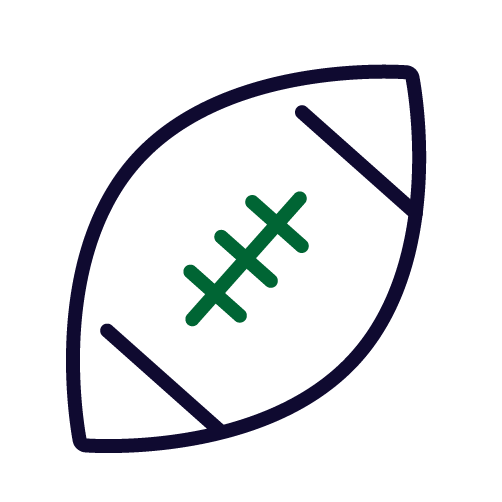
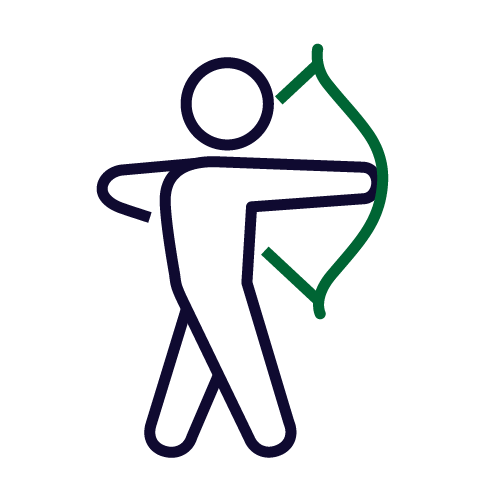

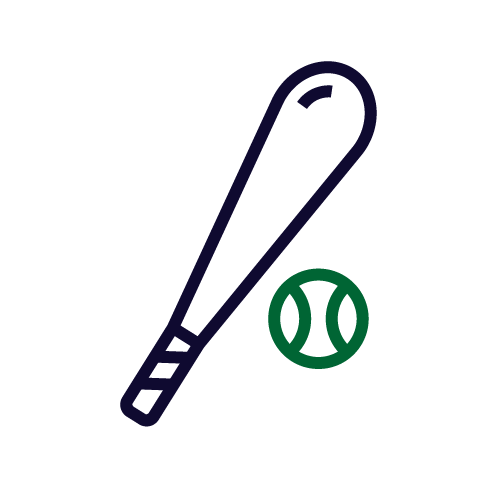
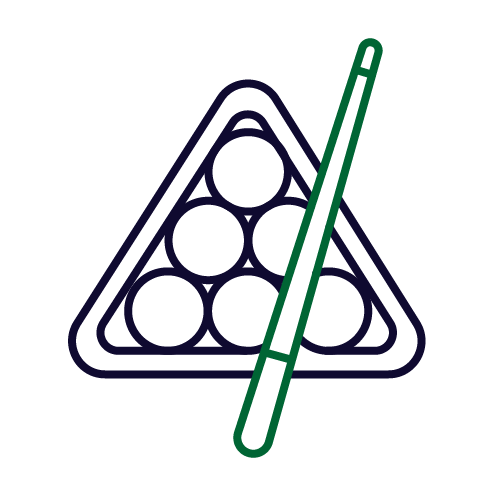


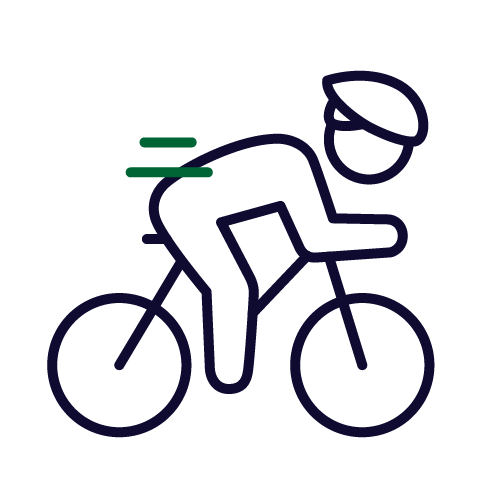


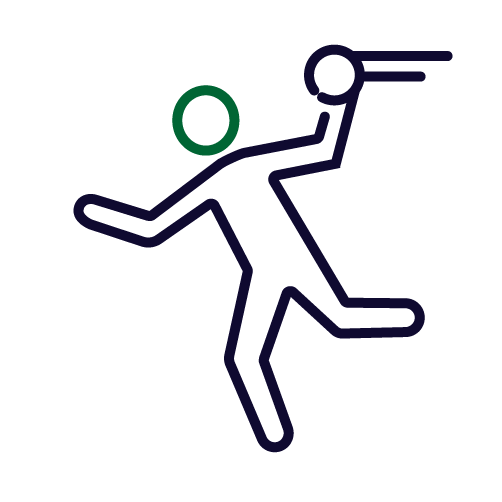
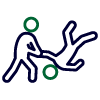
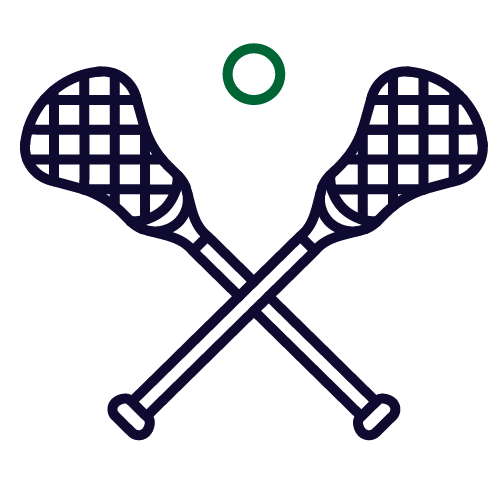

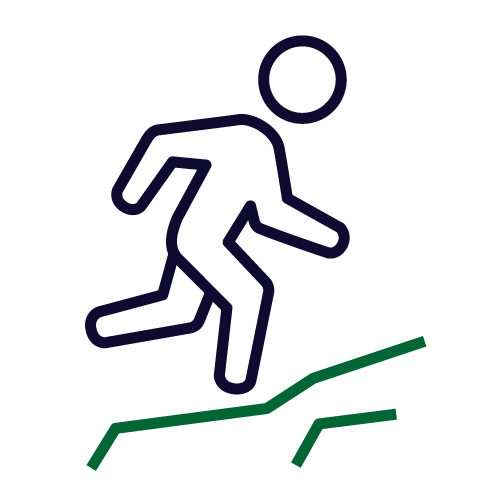
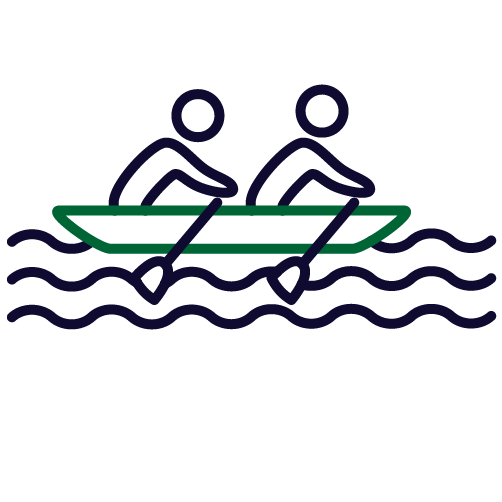
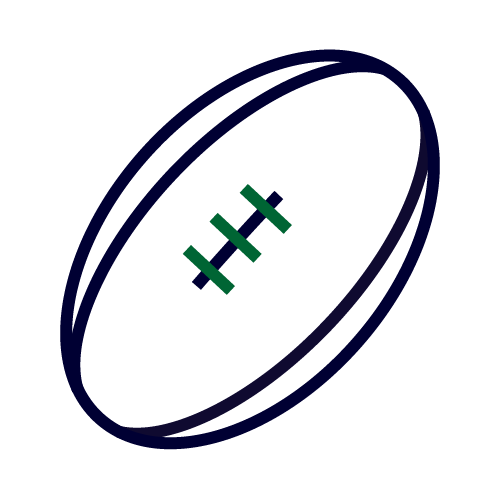
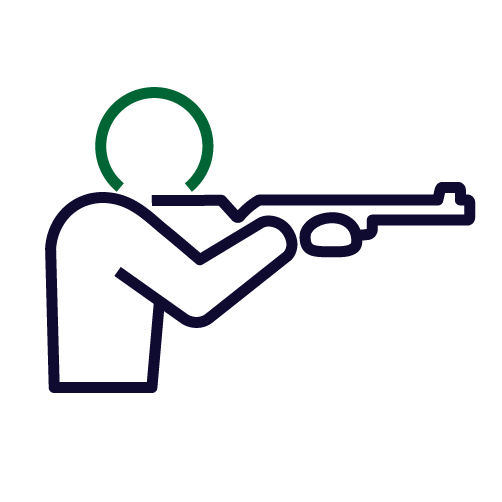
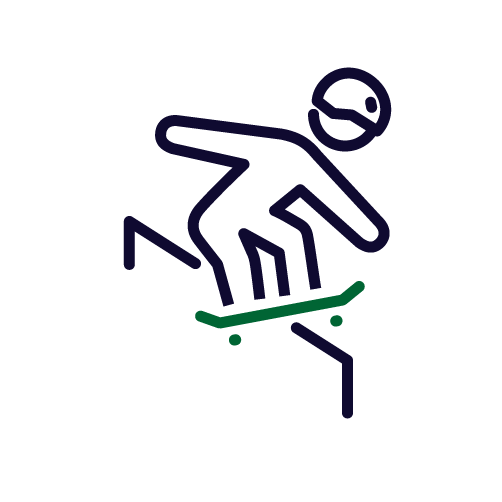
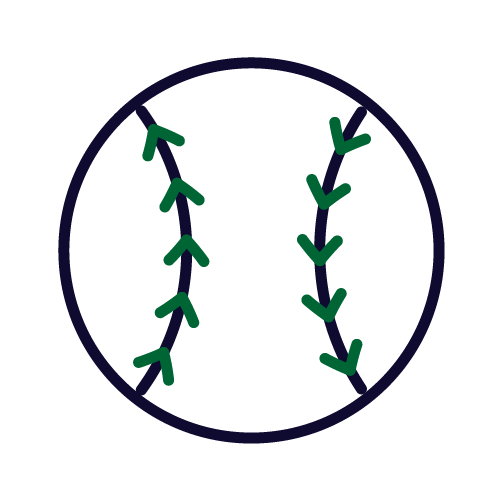
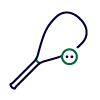

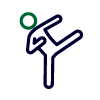

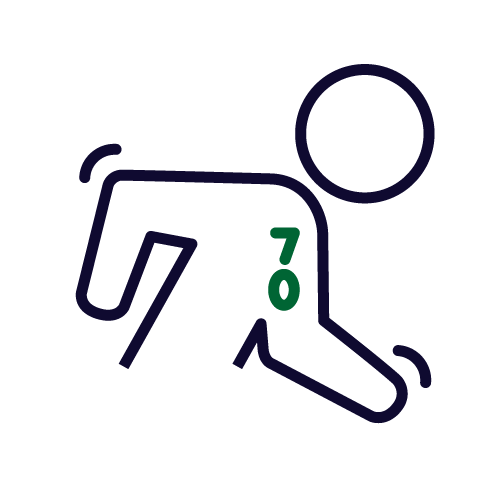
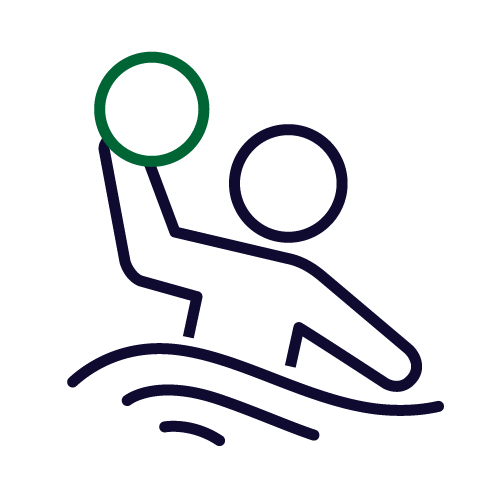

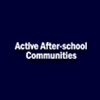


Why modify a sport?
Social
Modified sports can also be aimed at providing faster, less formal, and more social formats that can cater to the needs of participants, at any age. These modified sports seek to engage people who are either time poor or enjoy being active but with less emphasis on competition. Social sports may also reduce the cost of equipment and venue access.
More information about social sport, organised, and non-organised sport can be found in the What is Sport? topic.